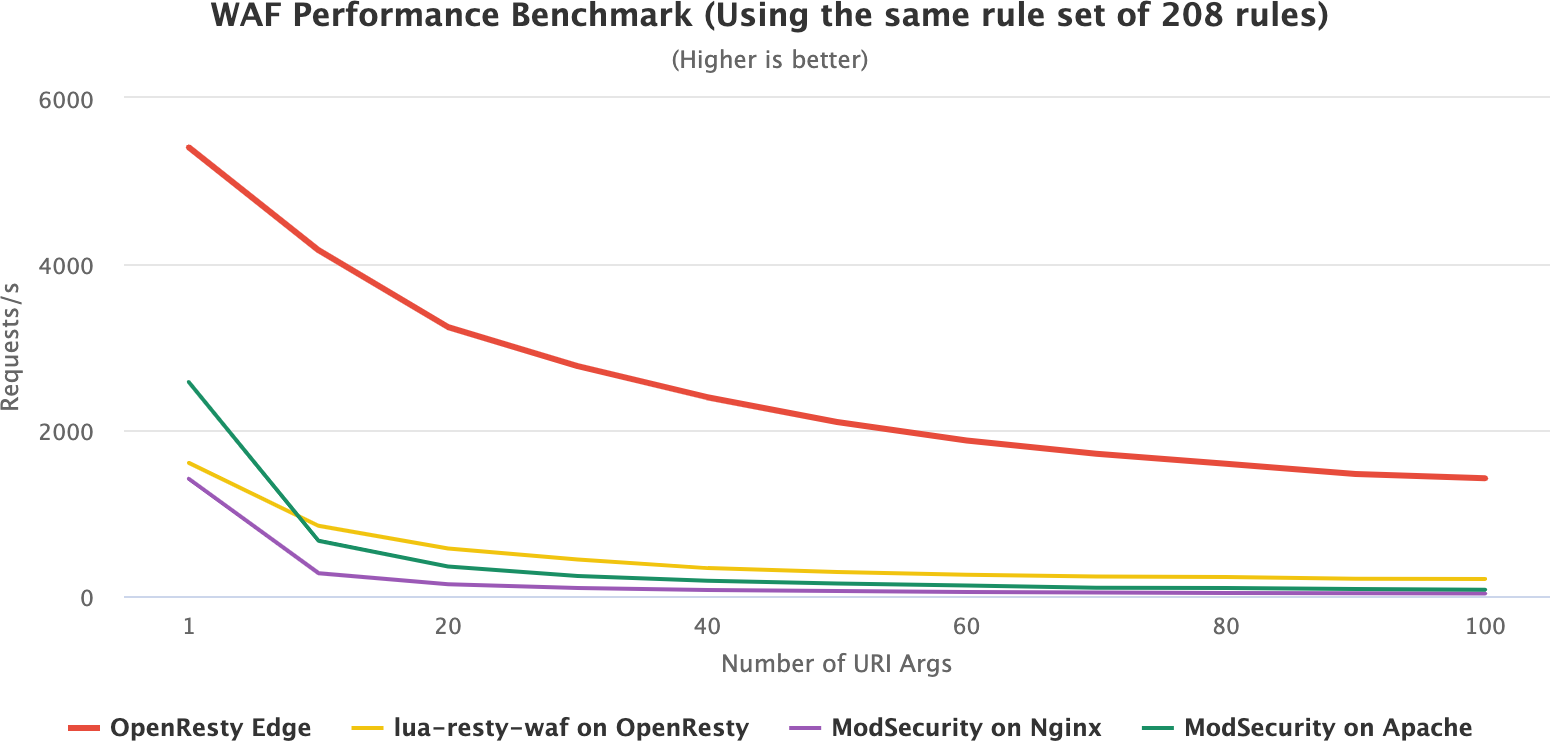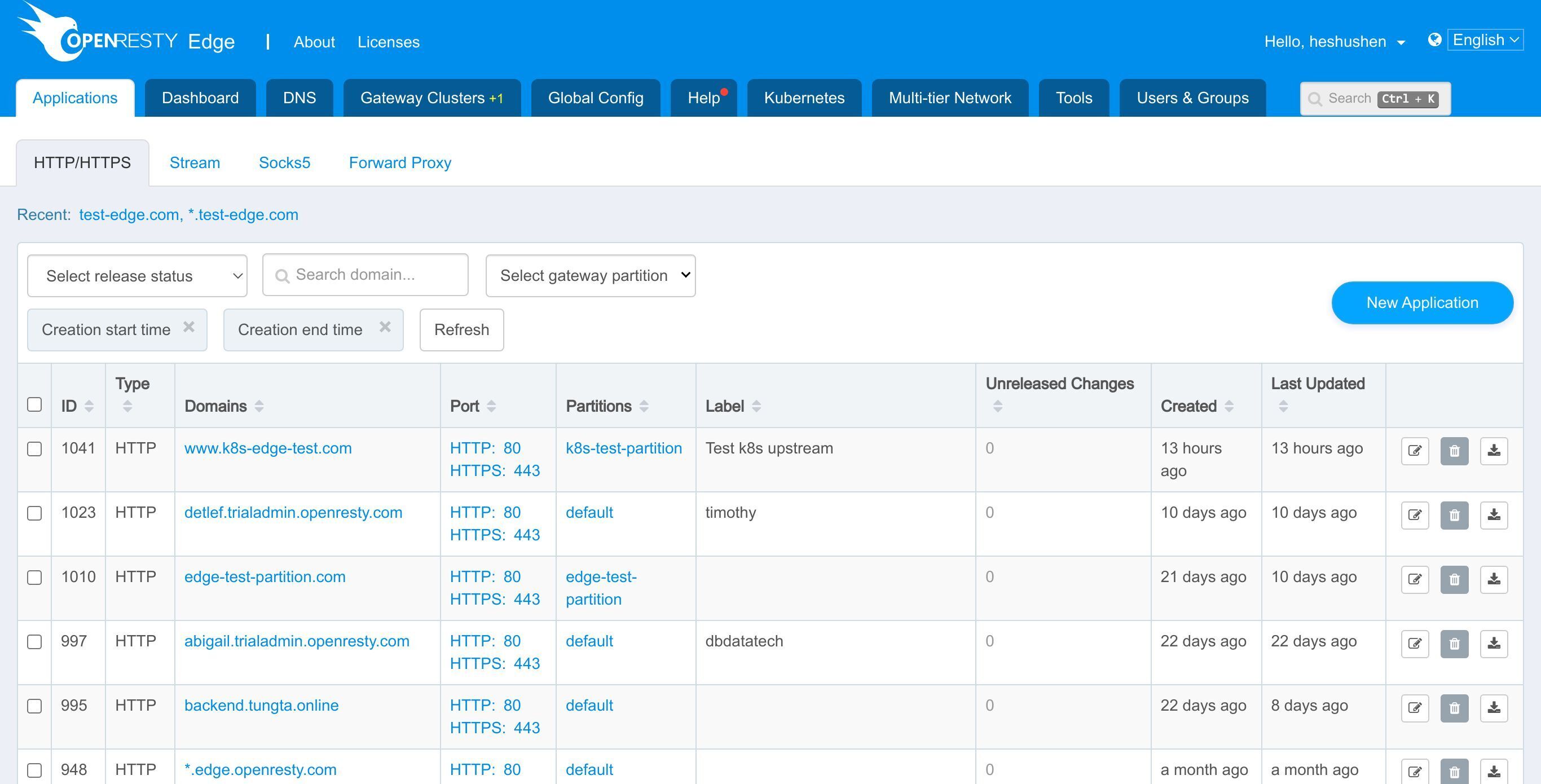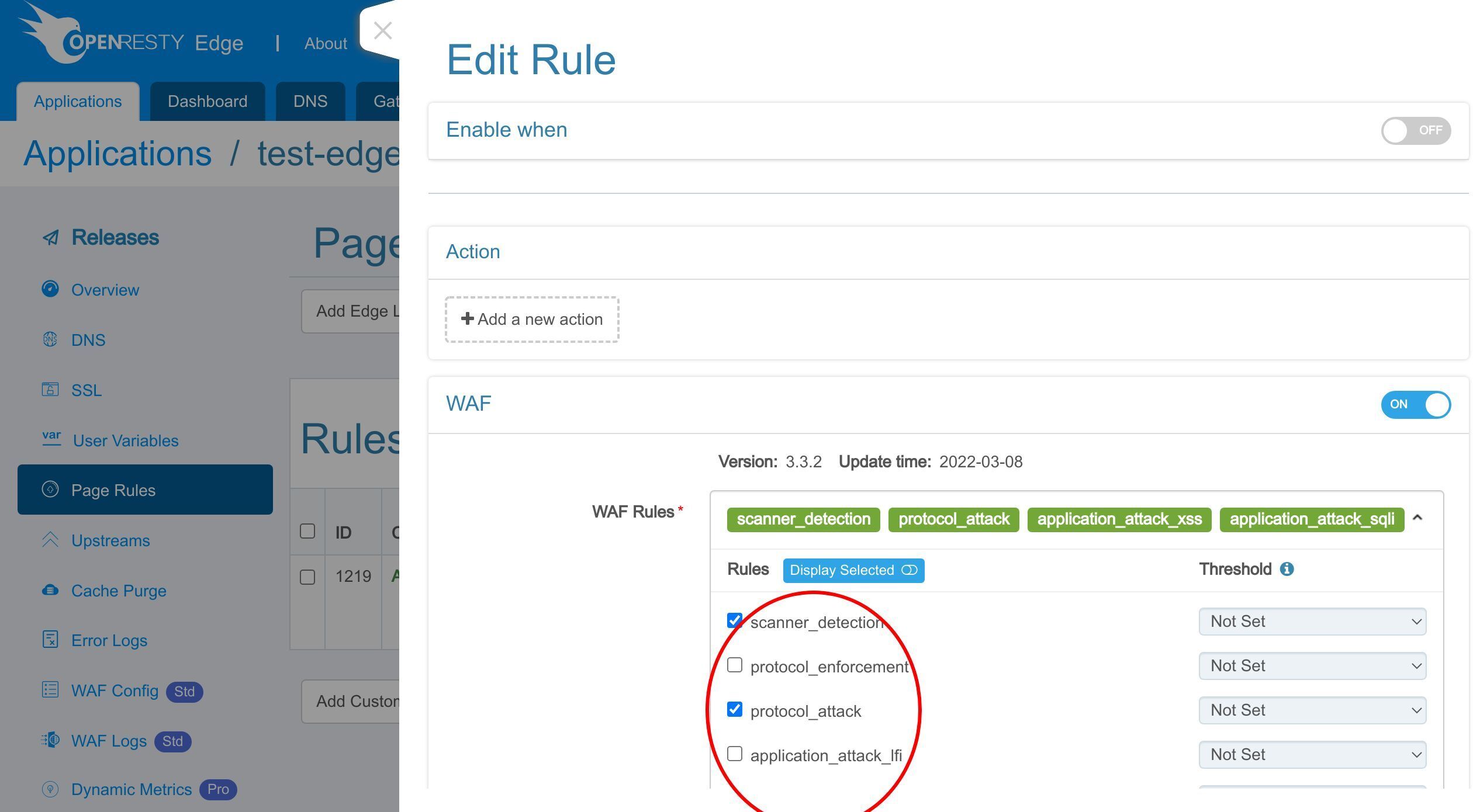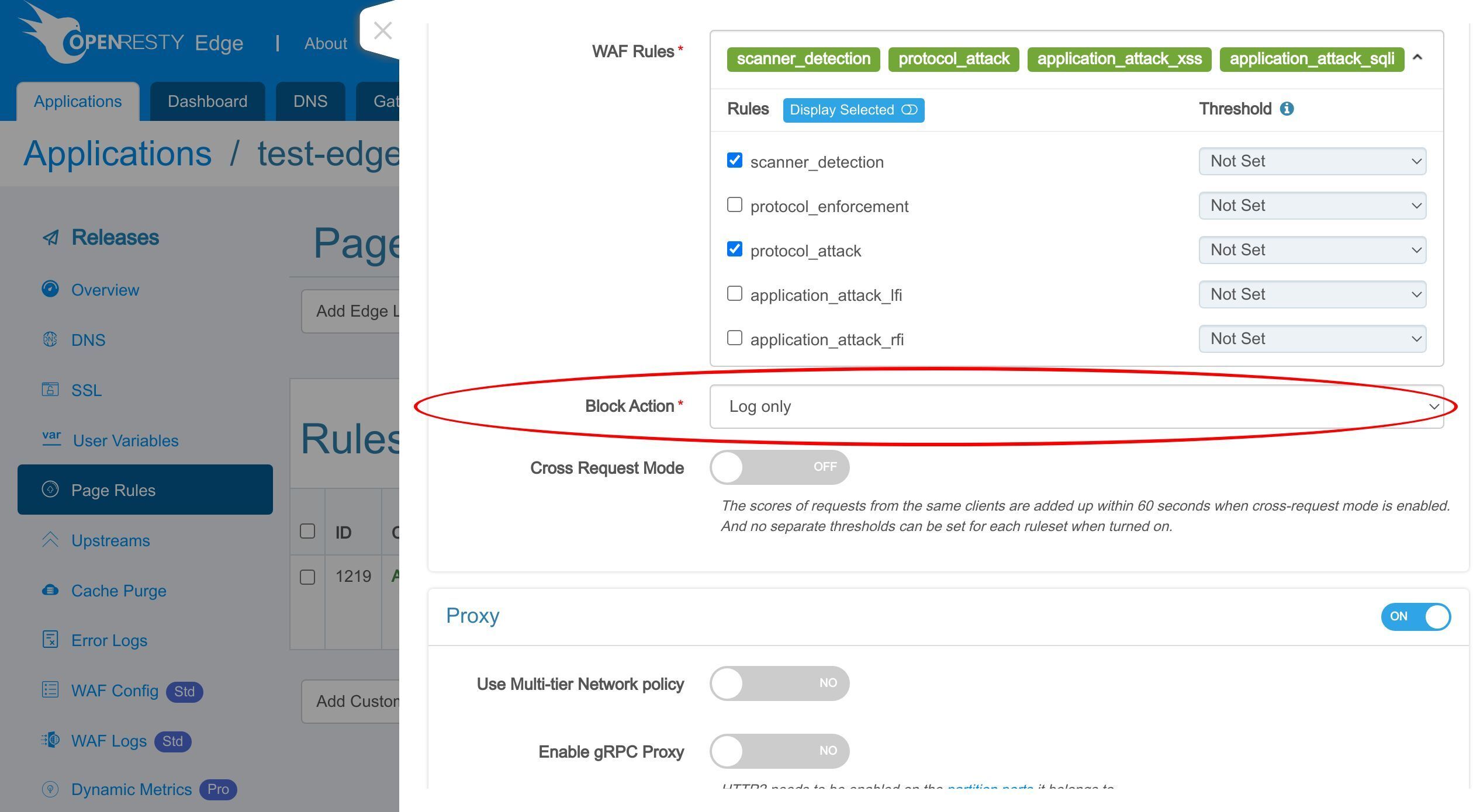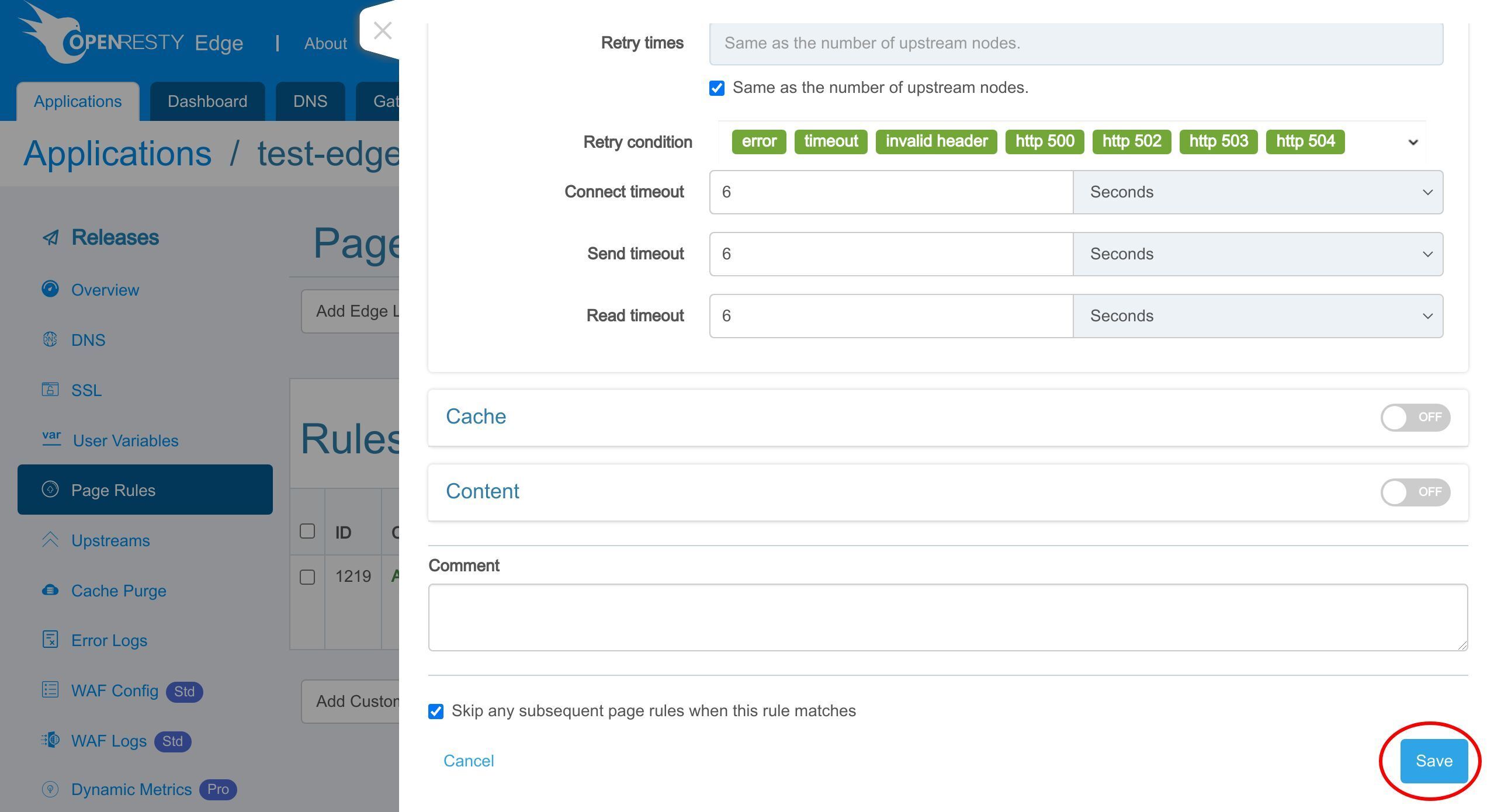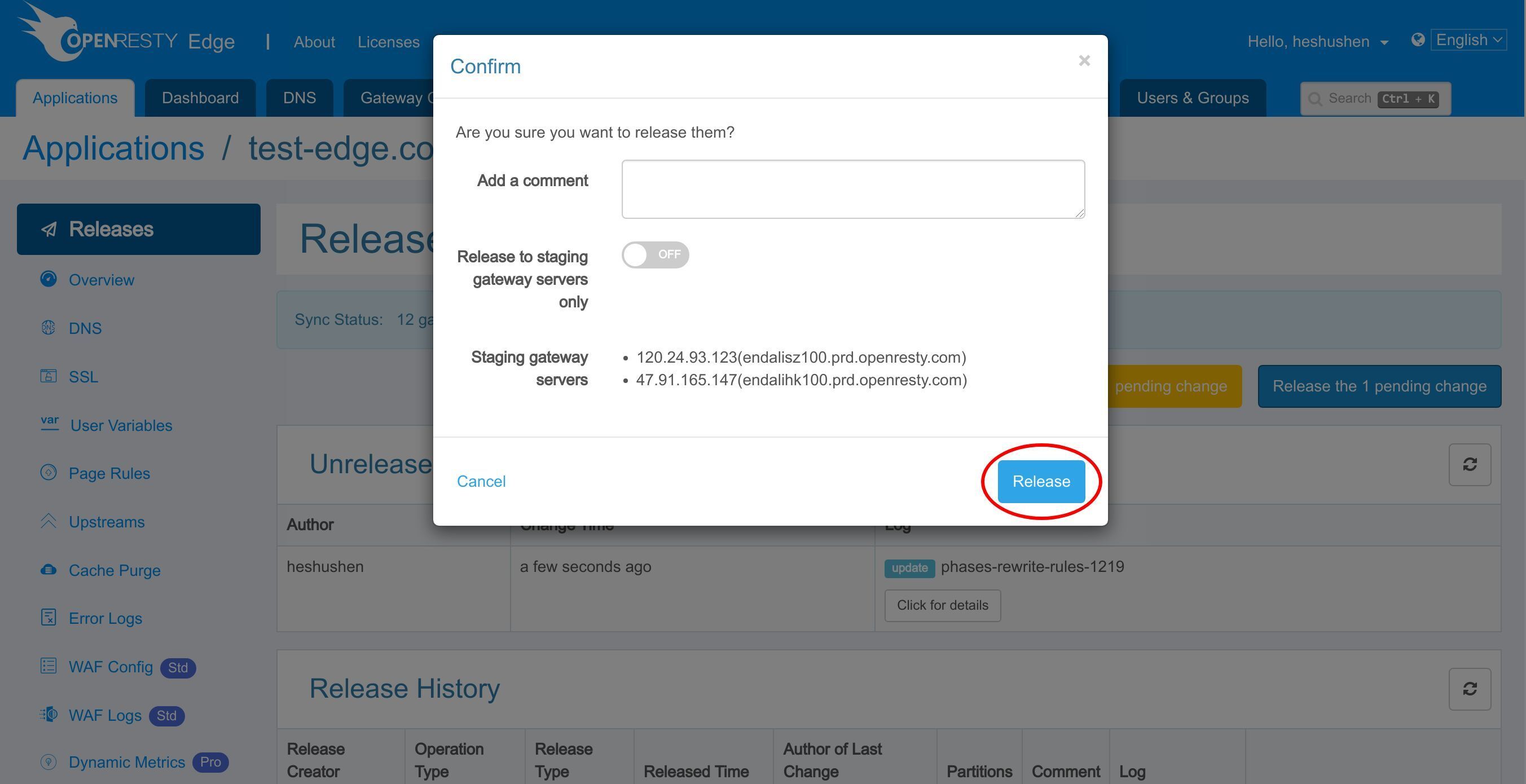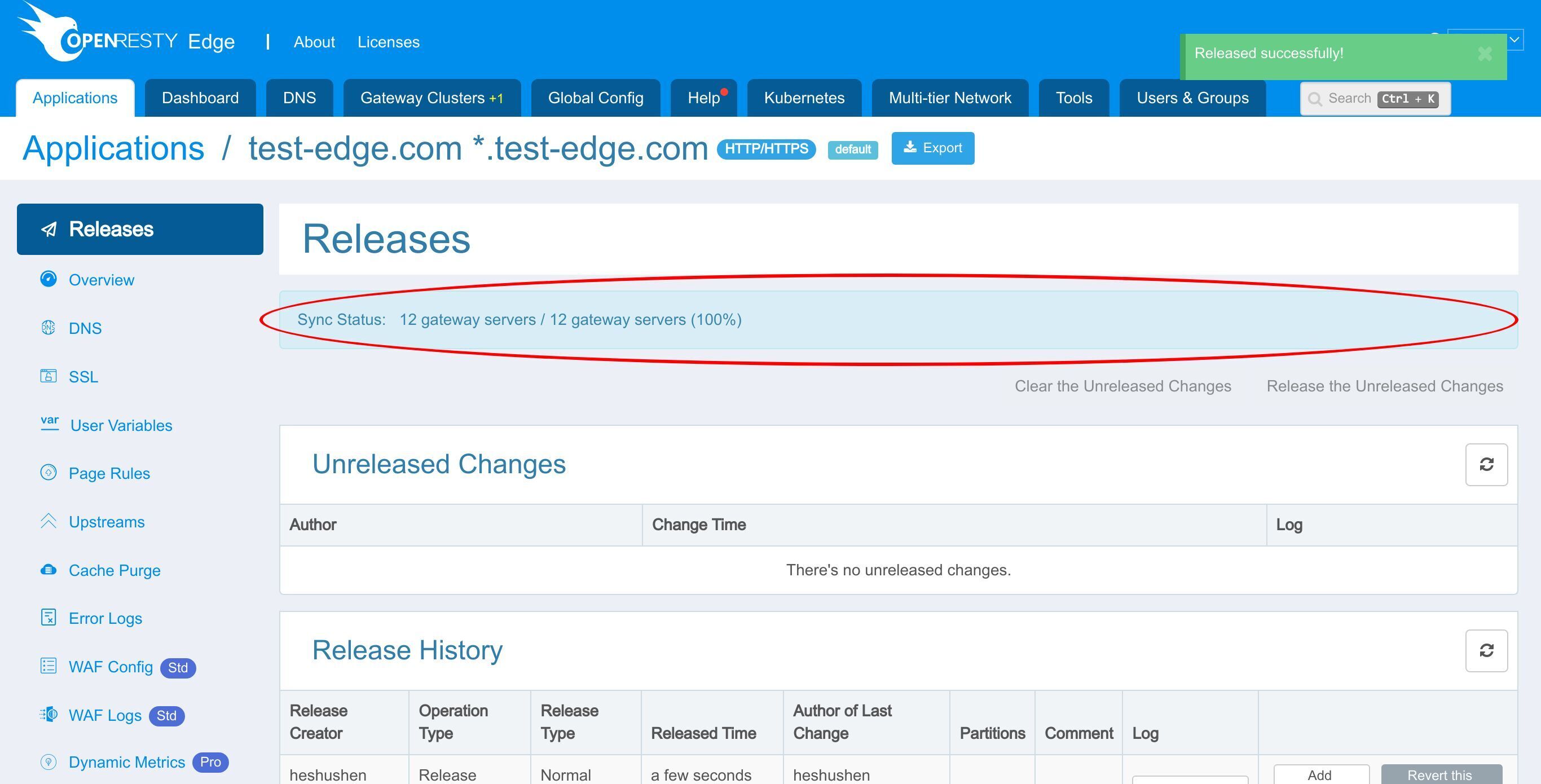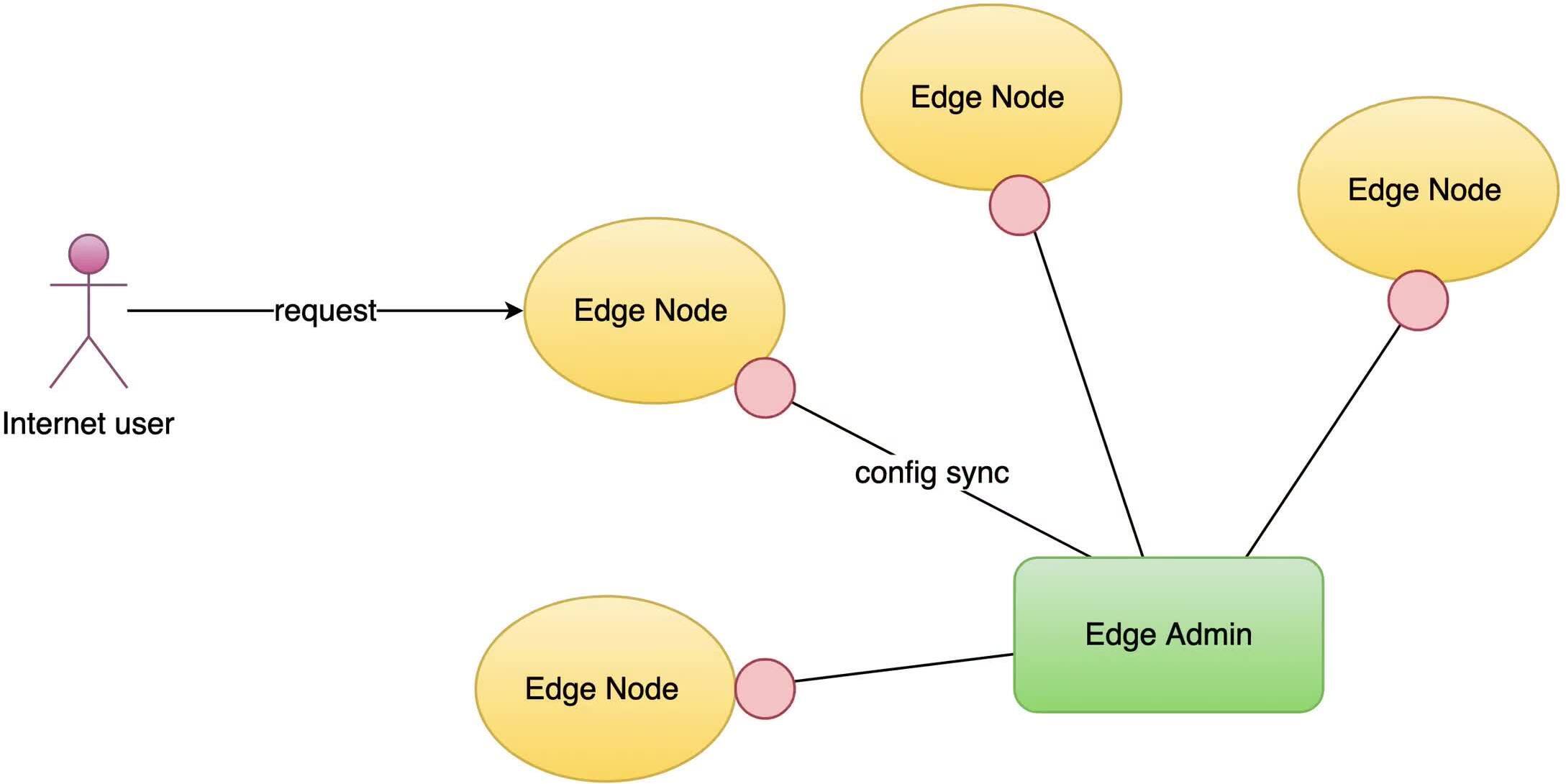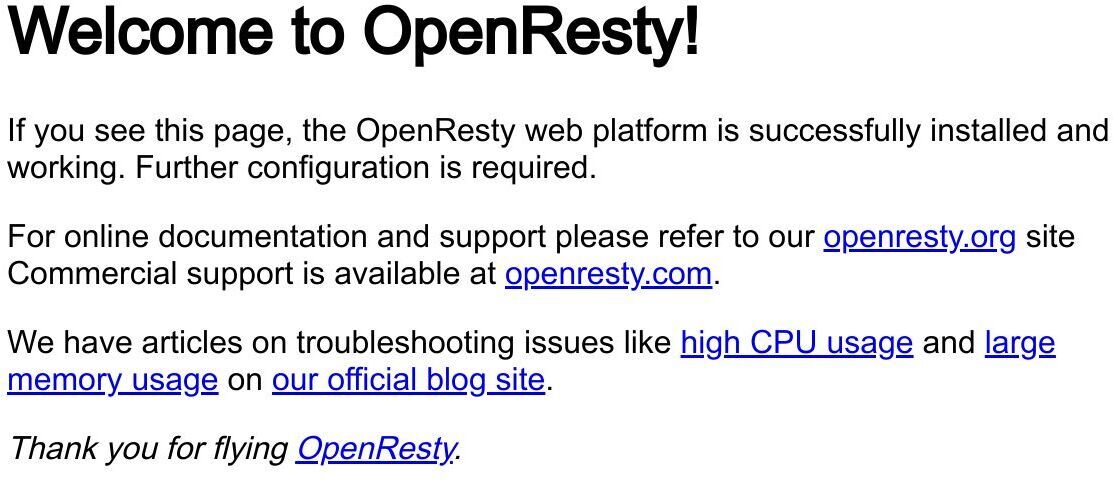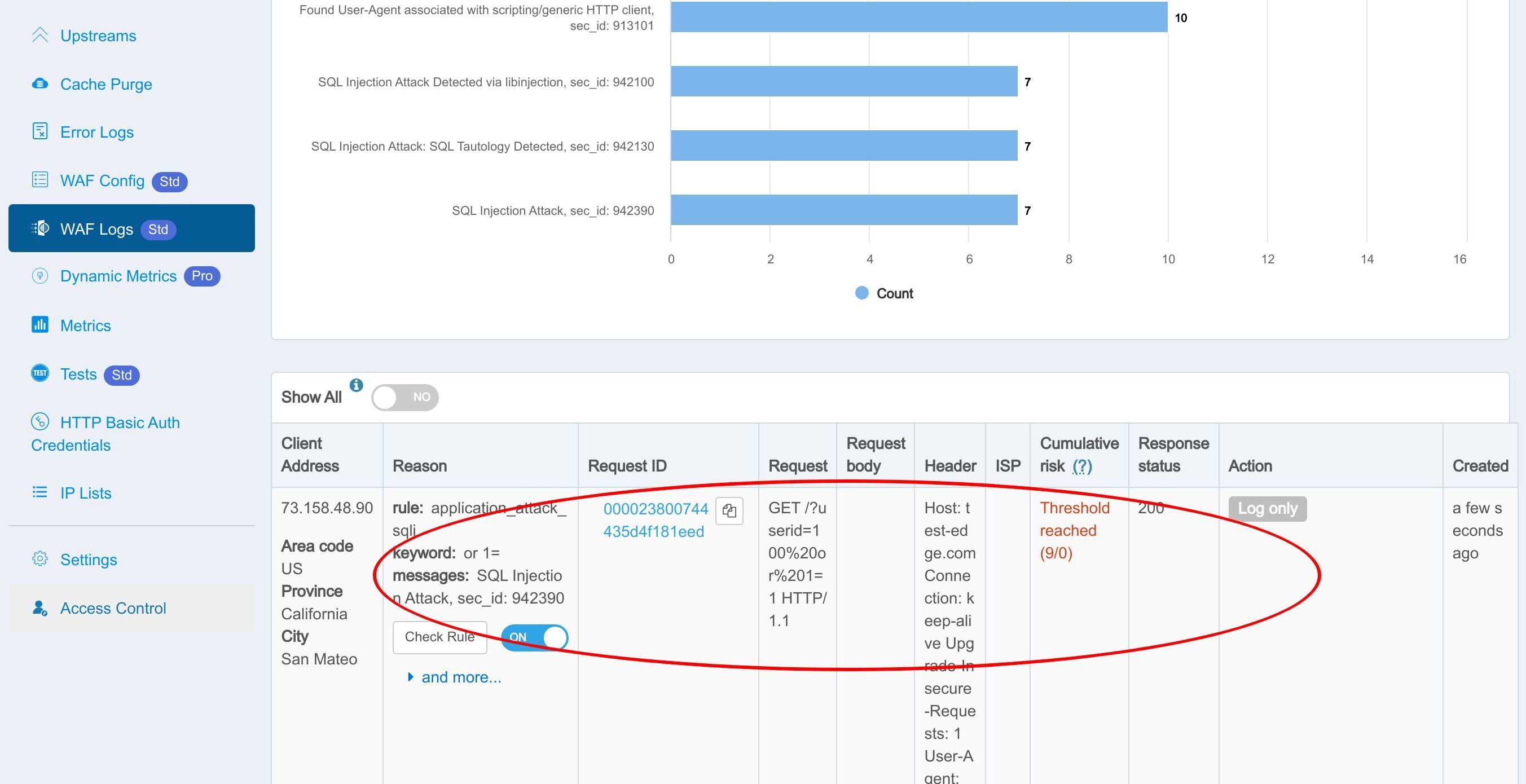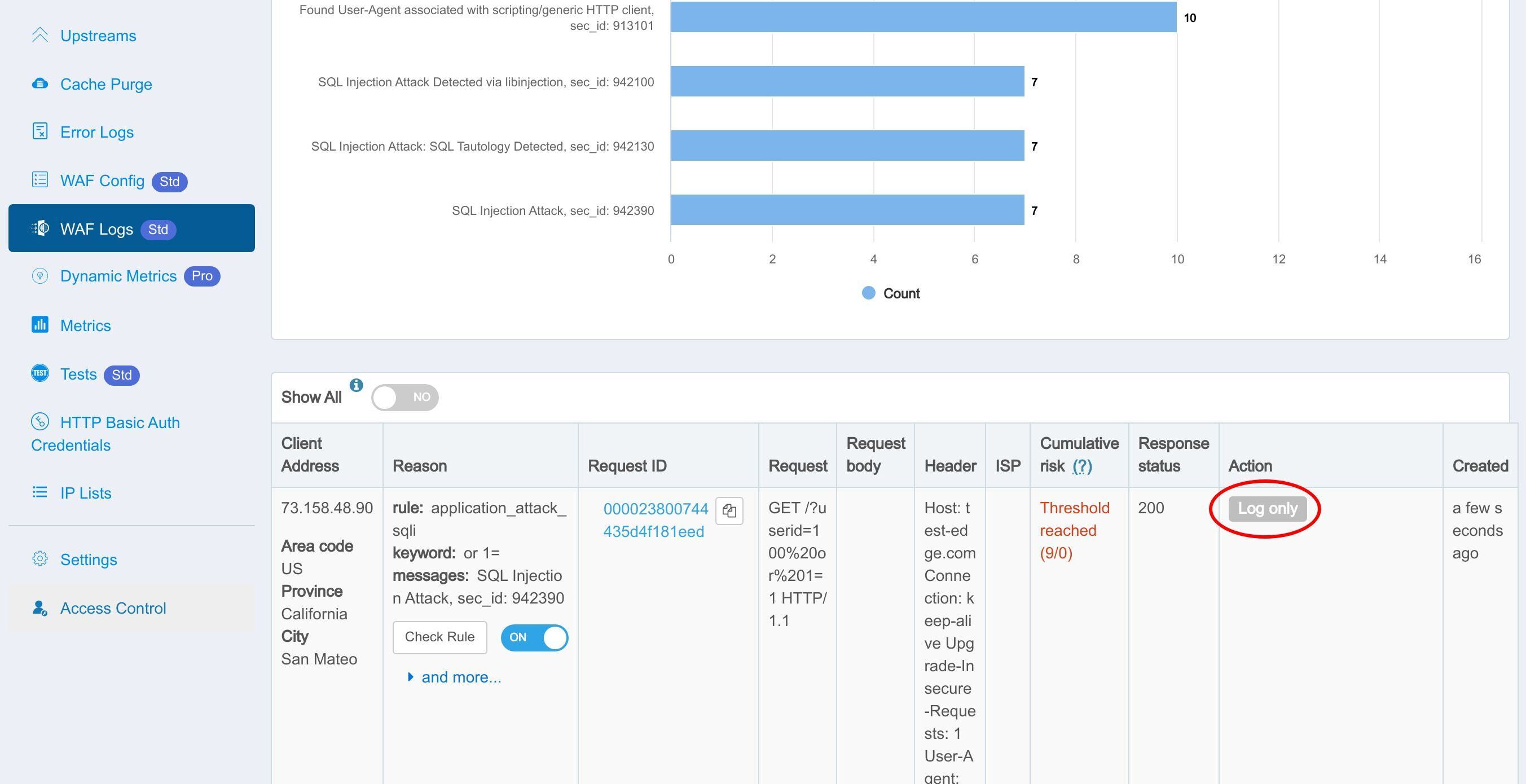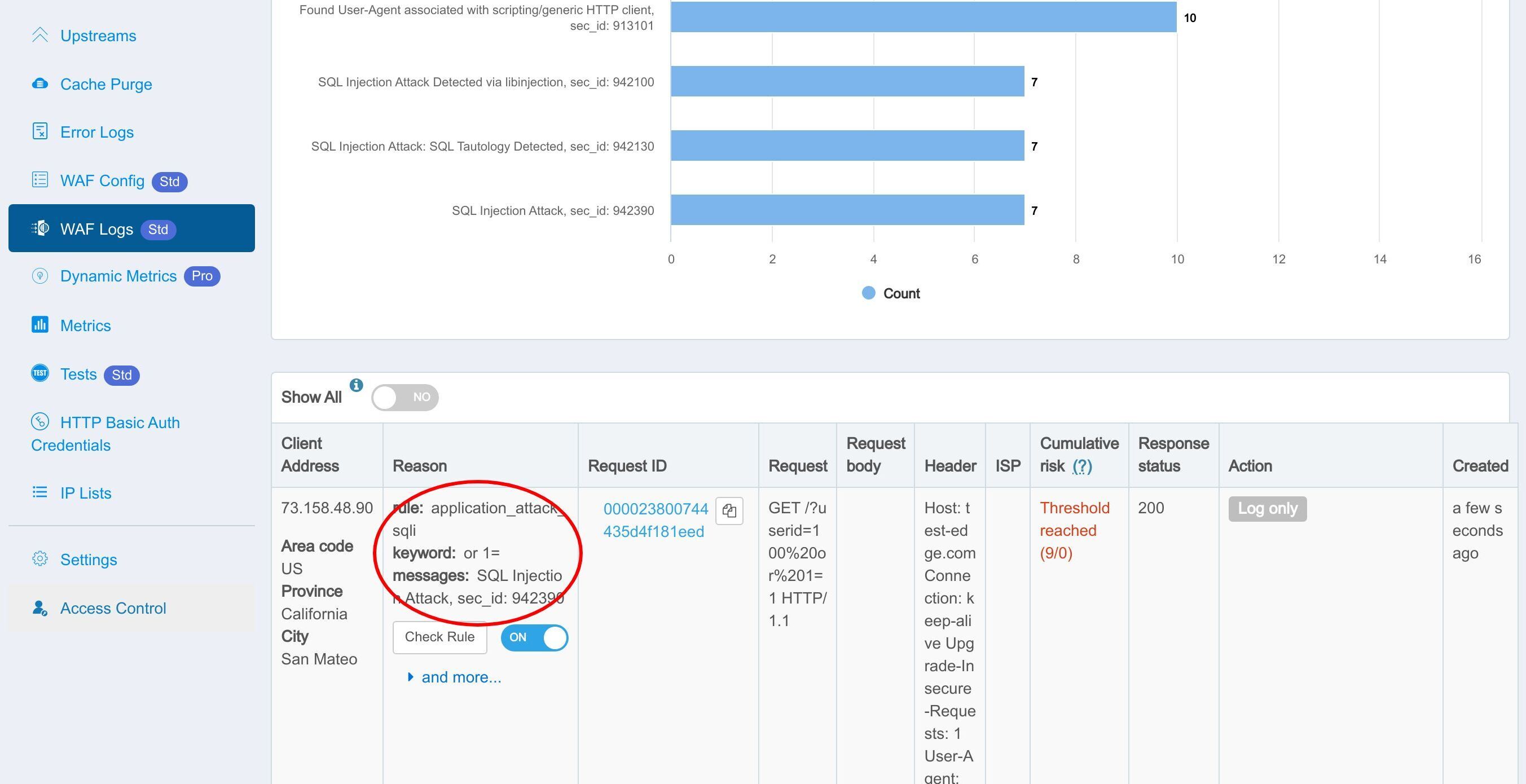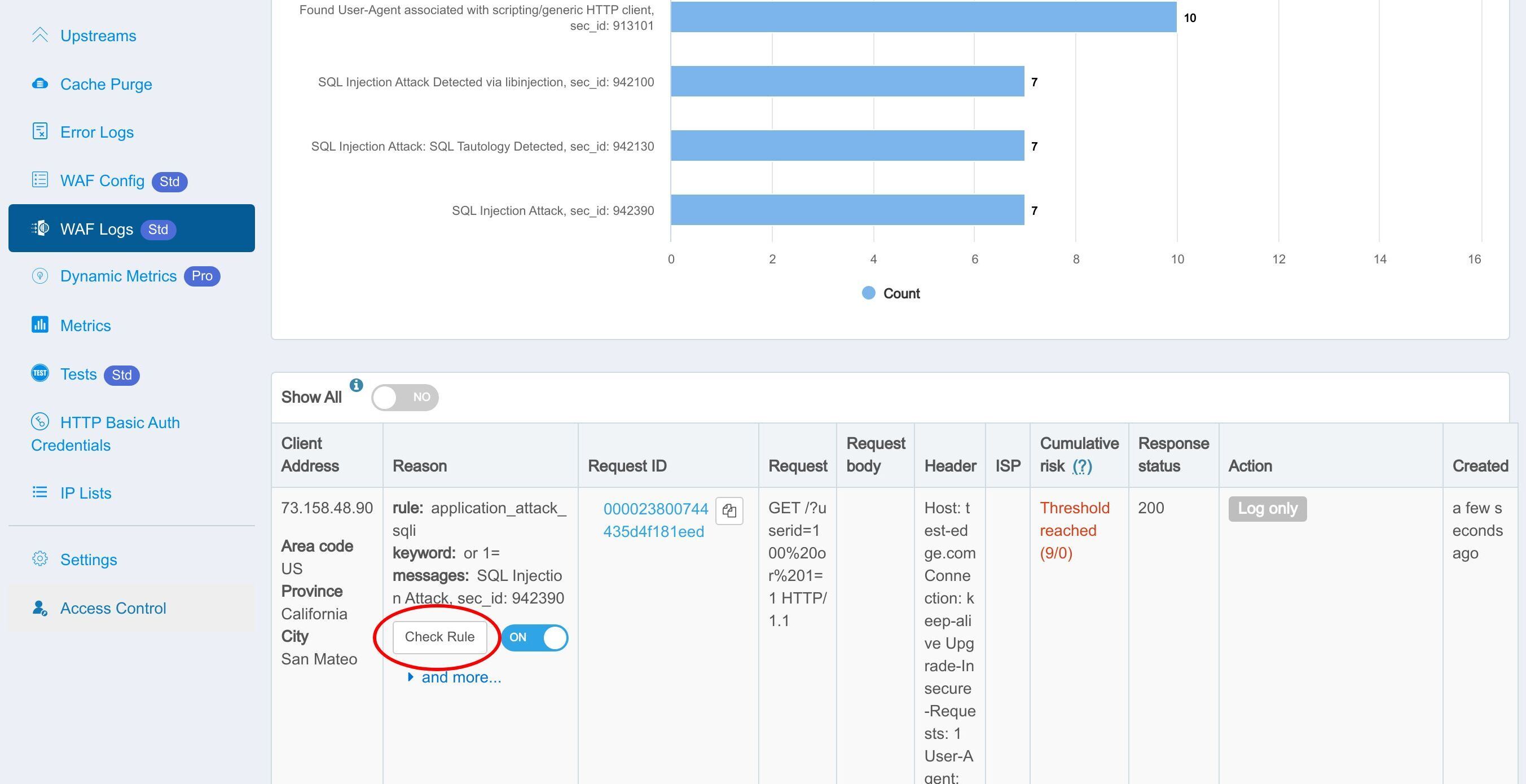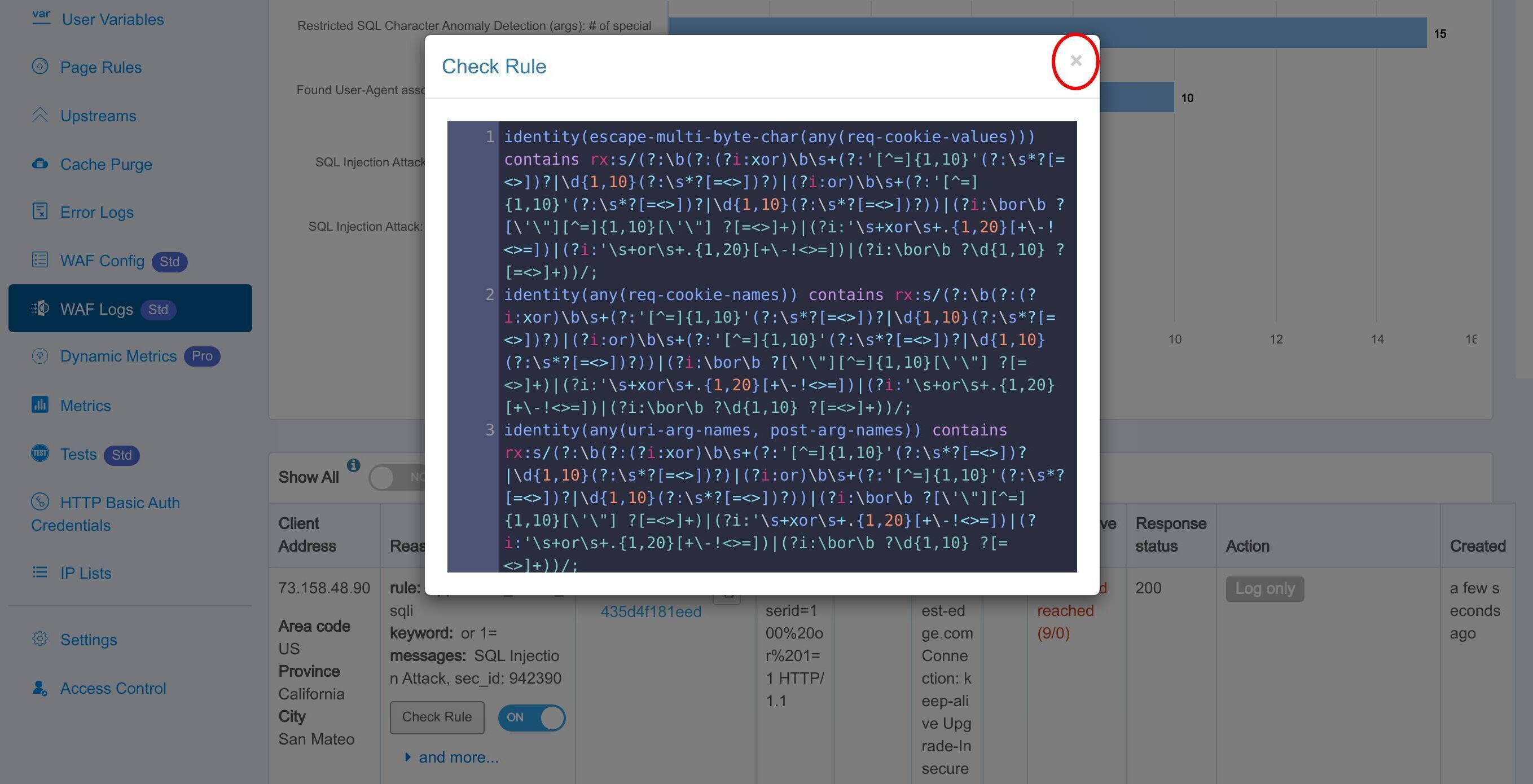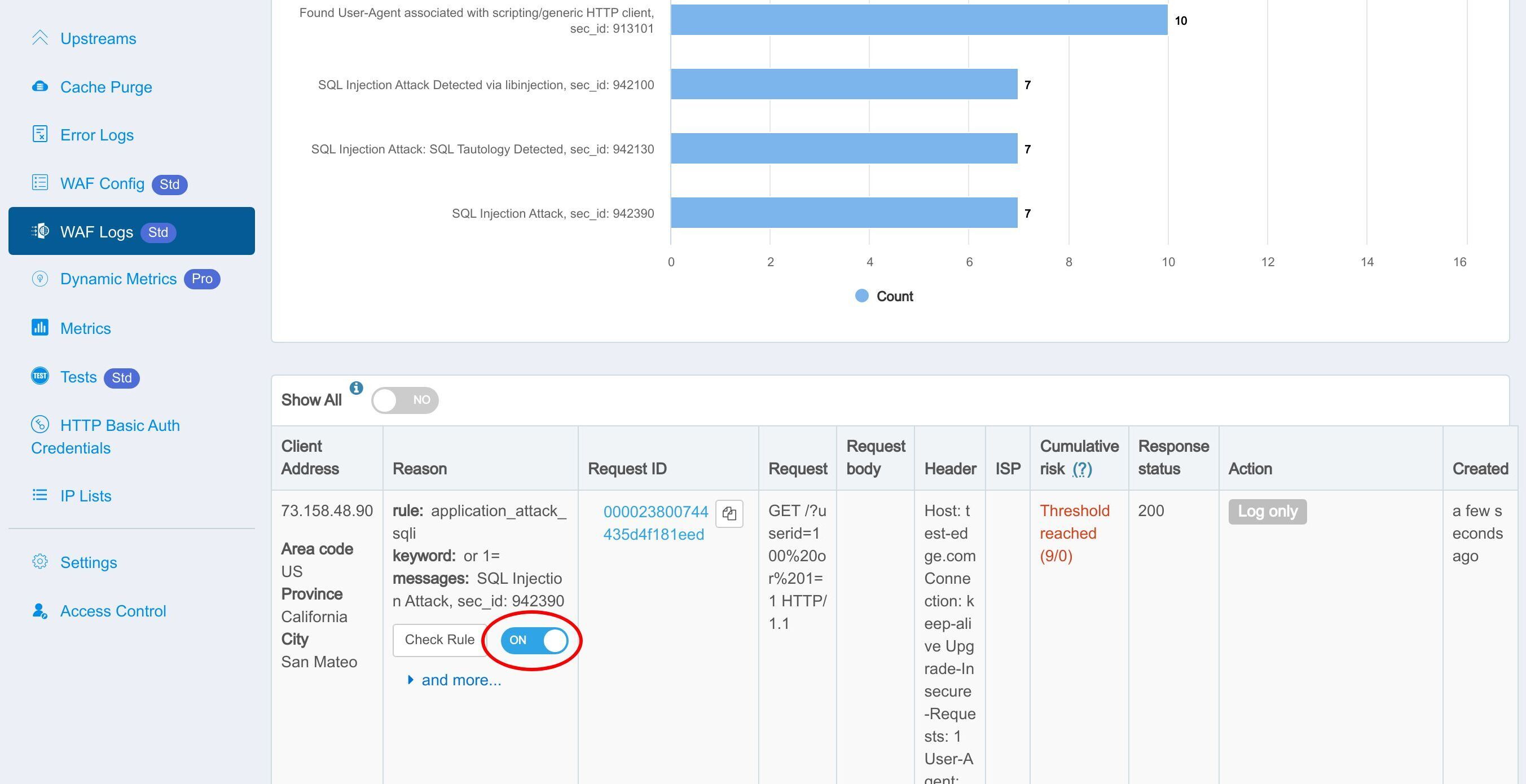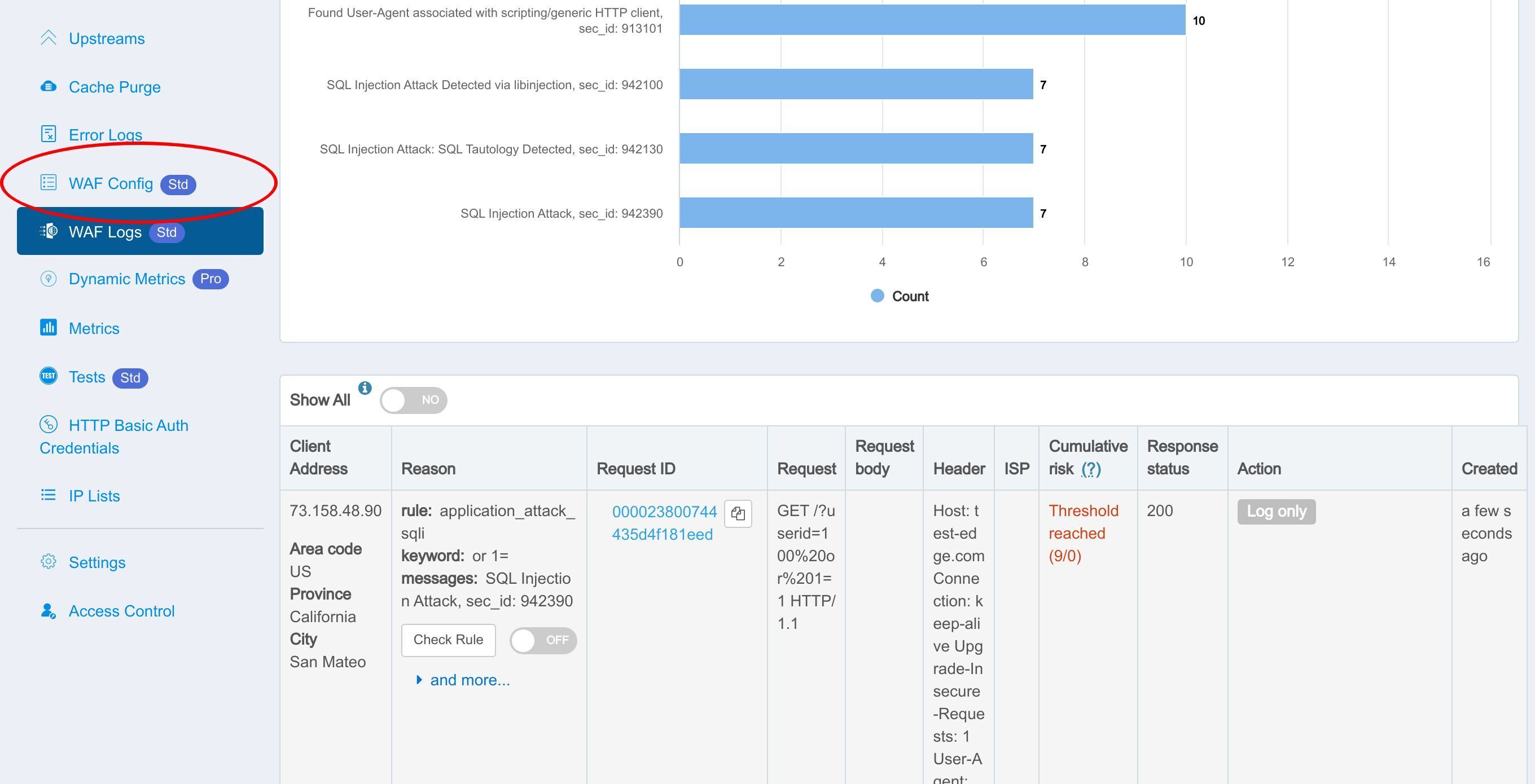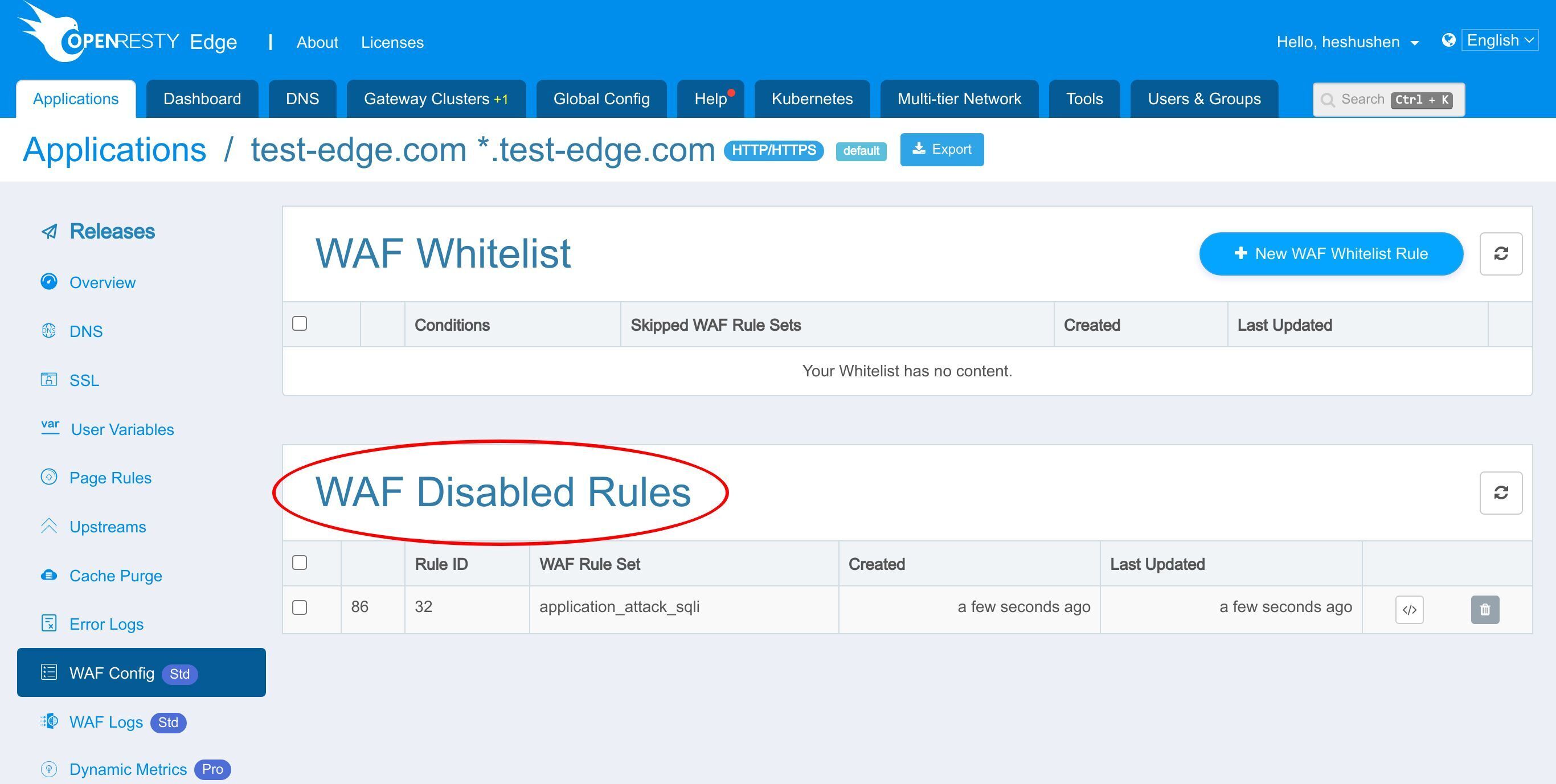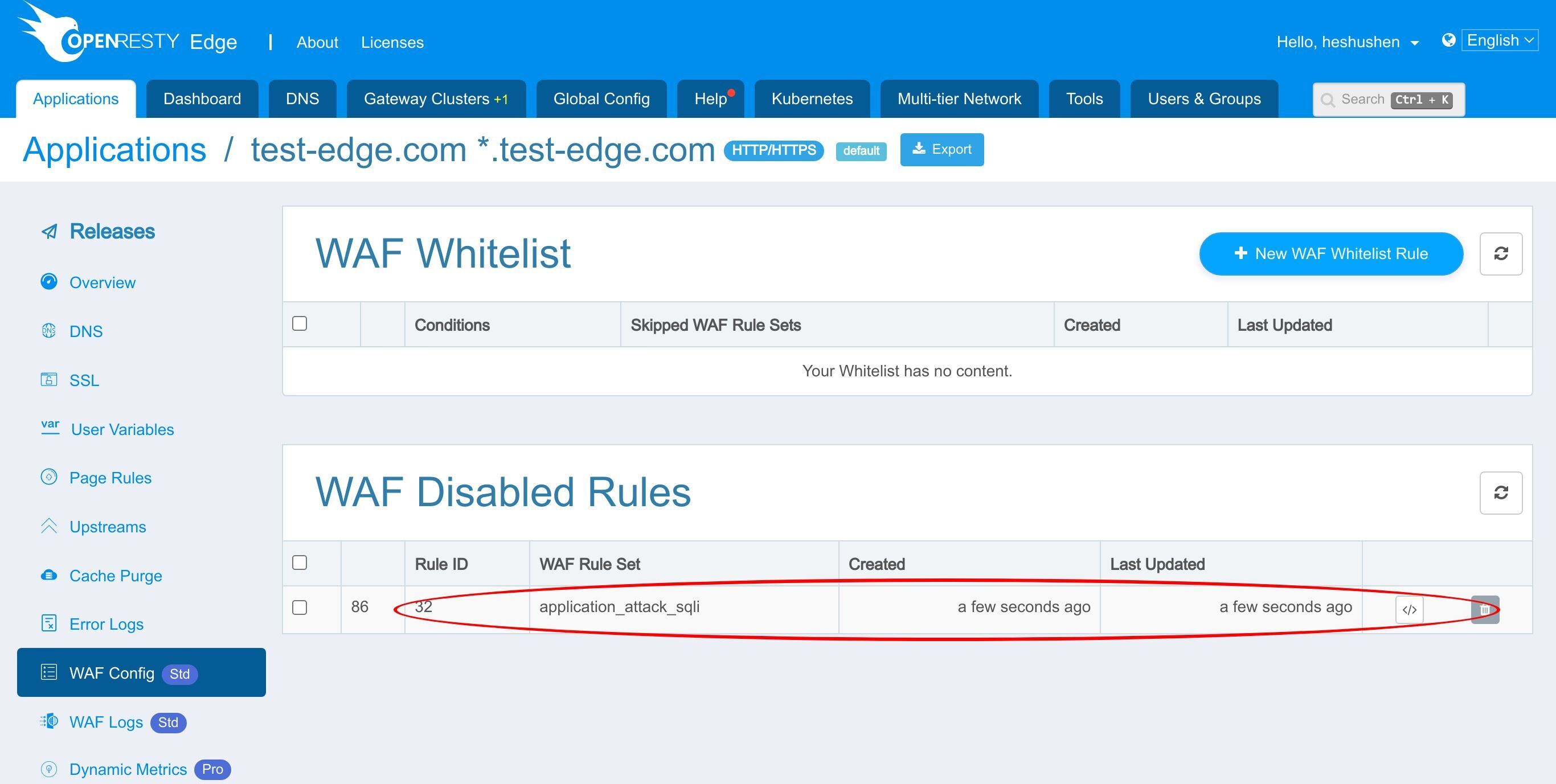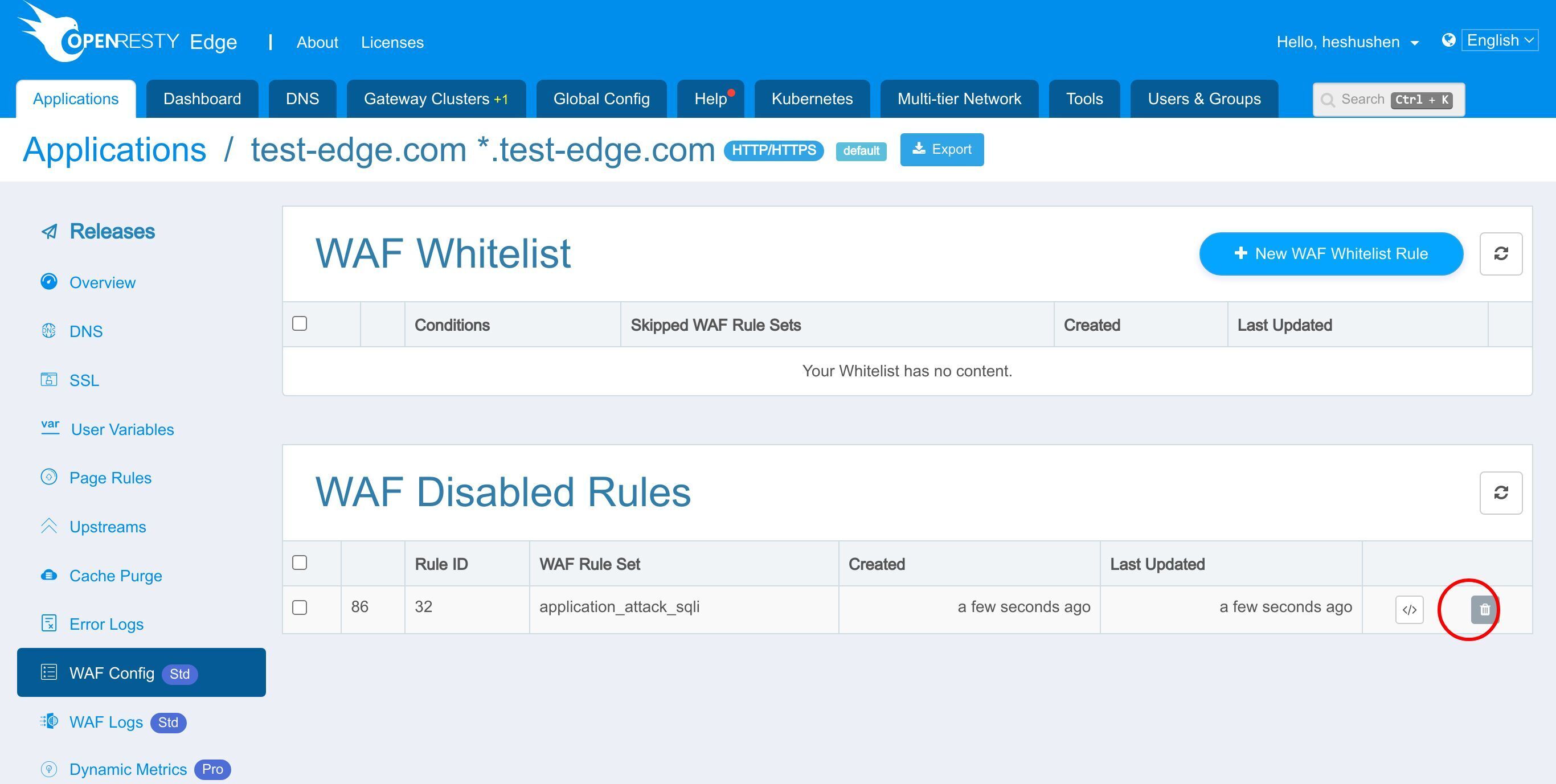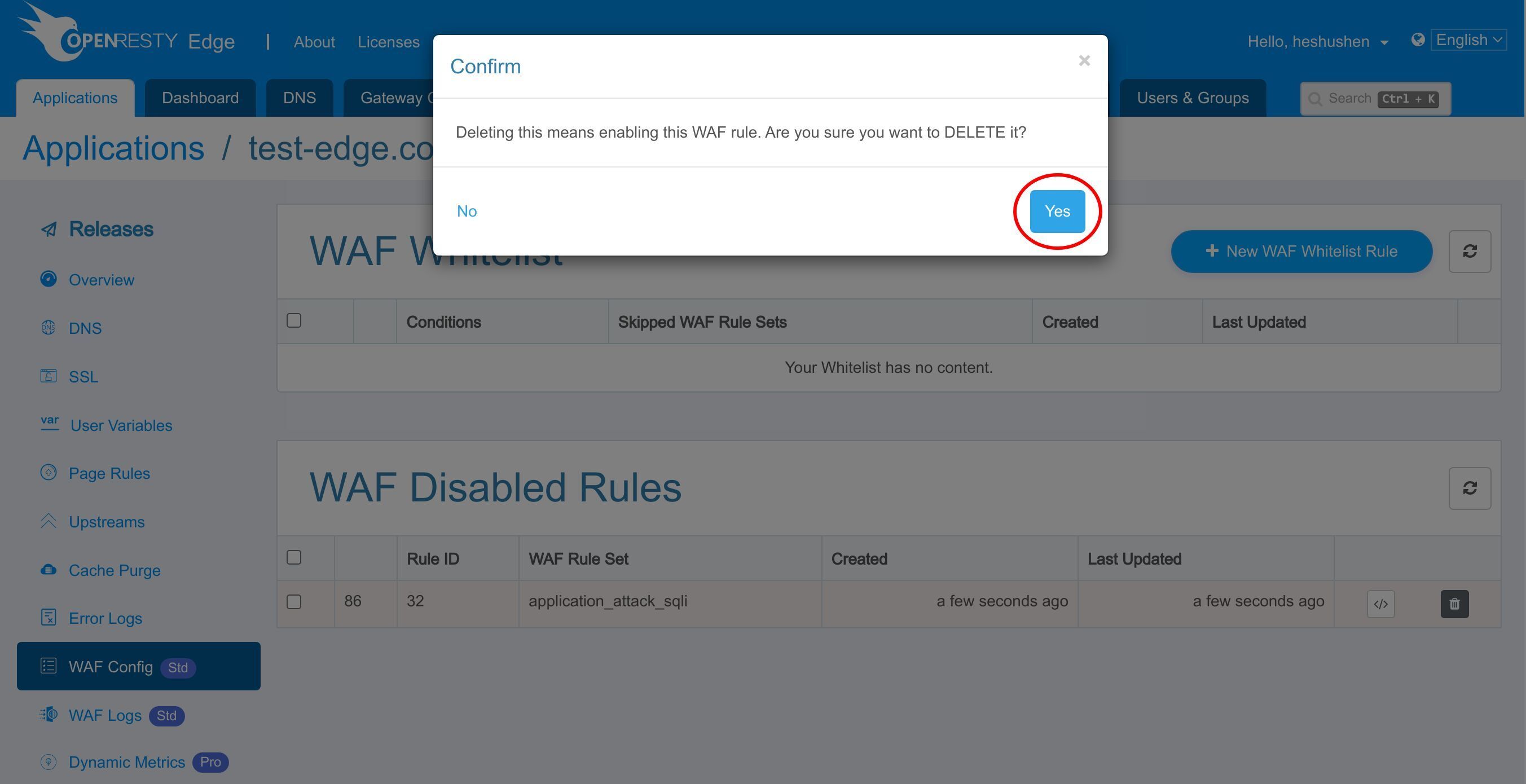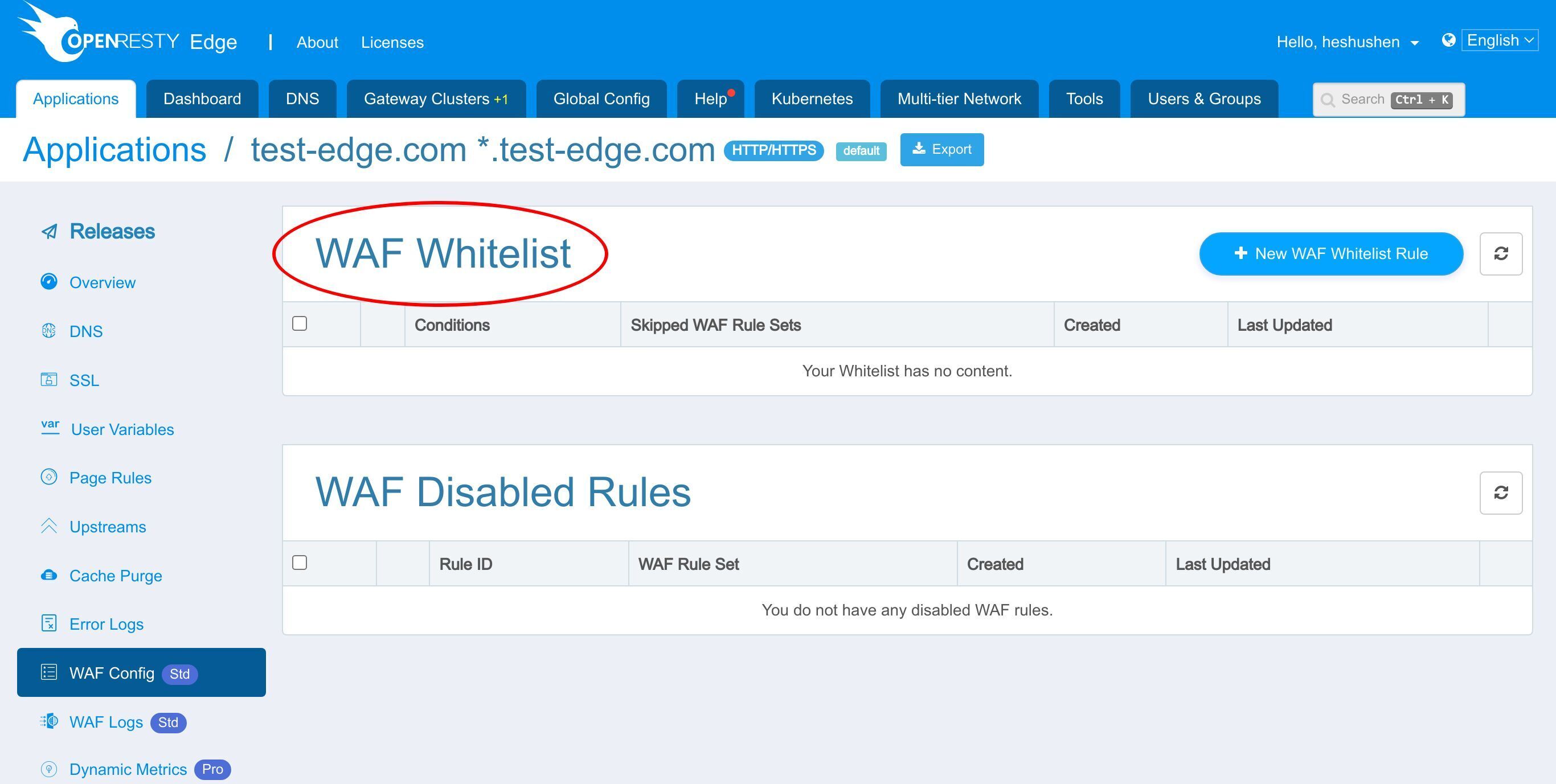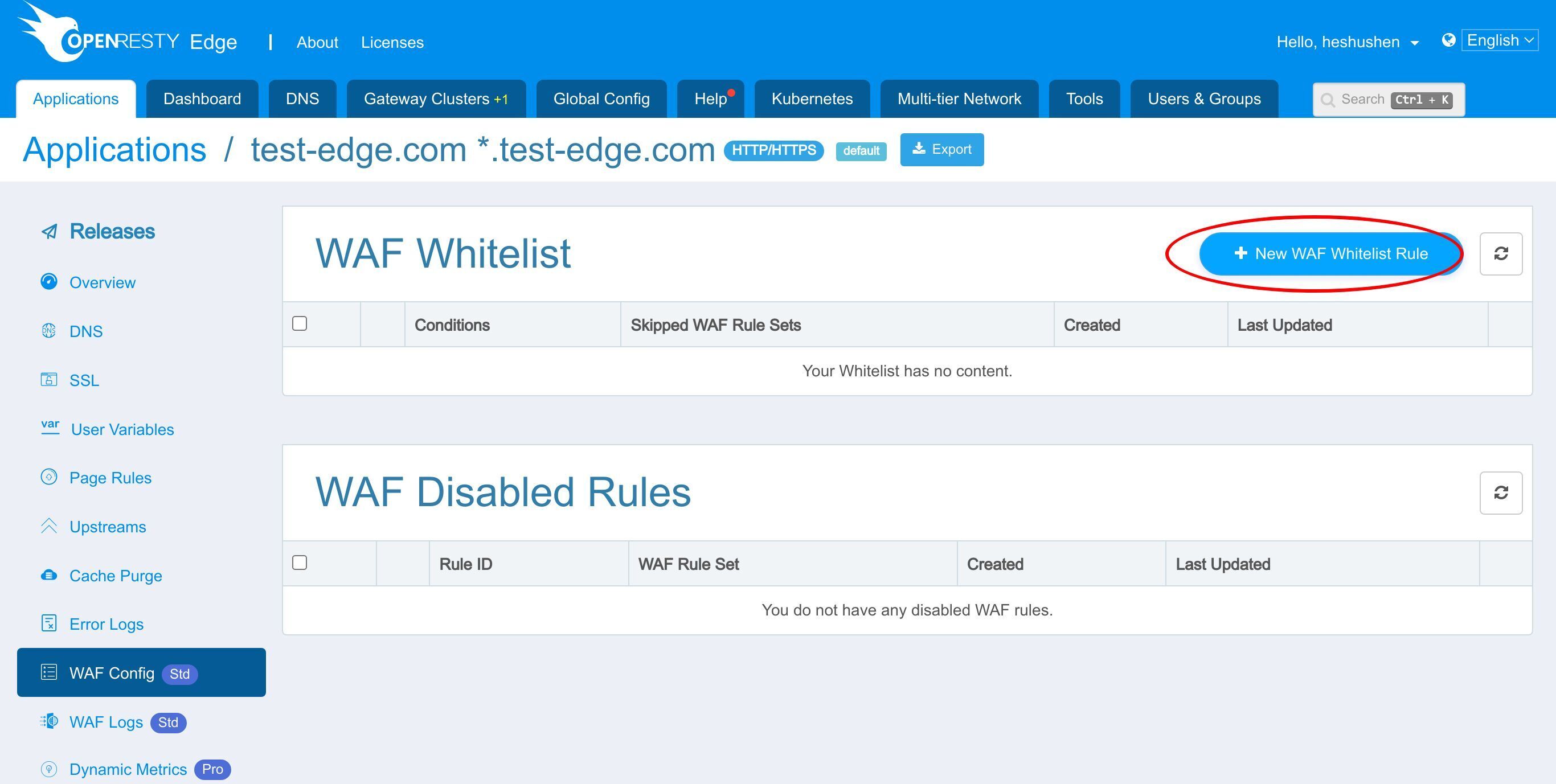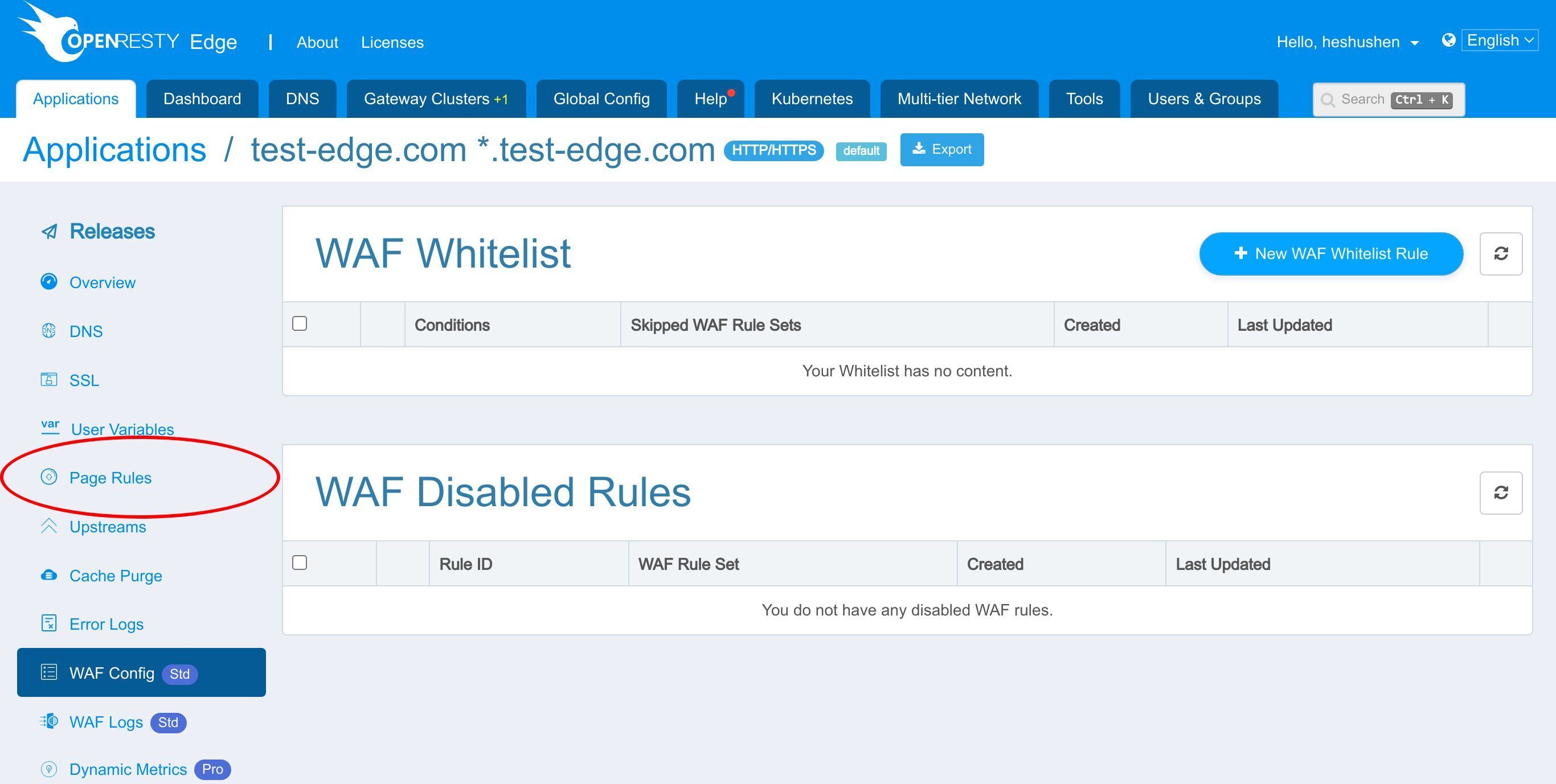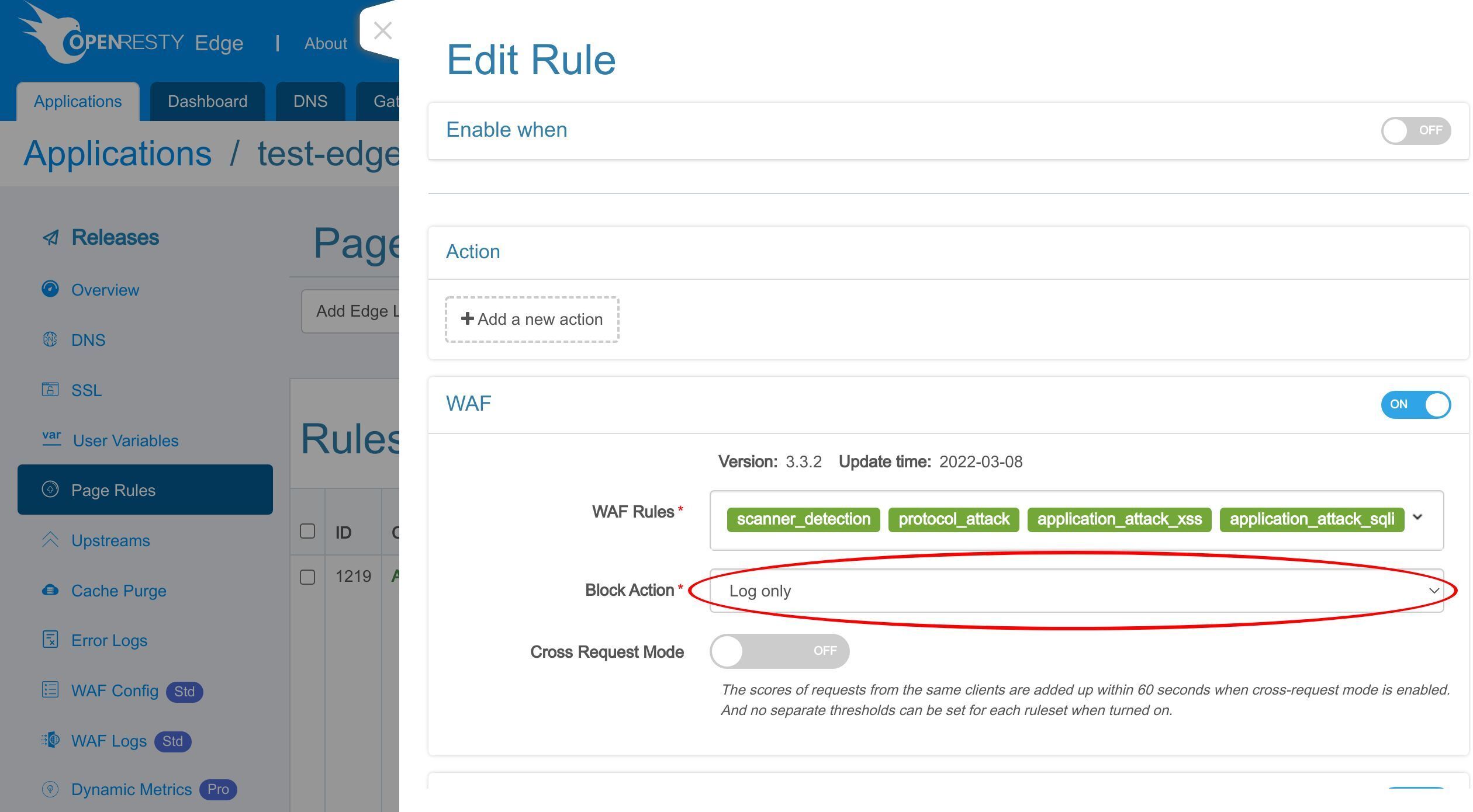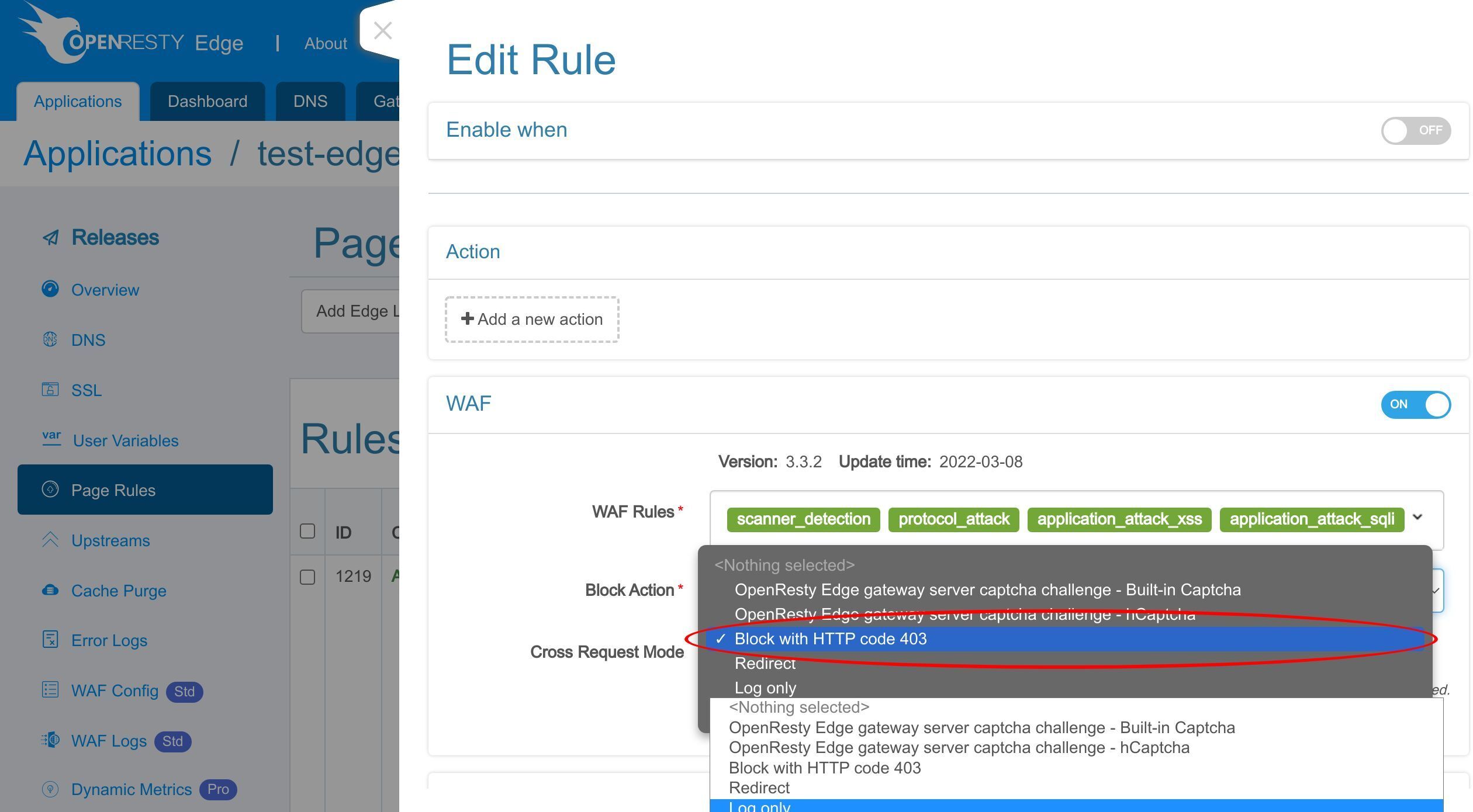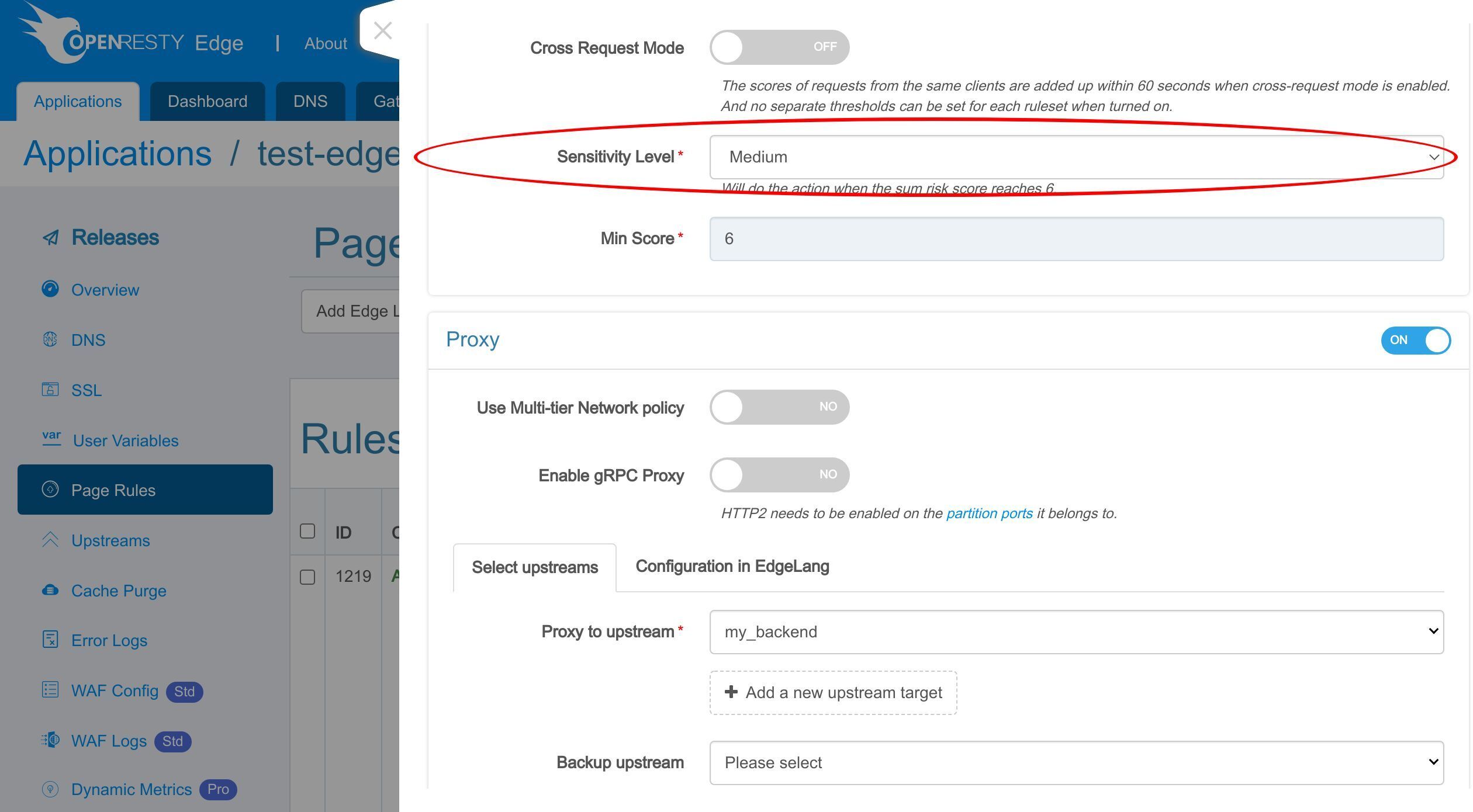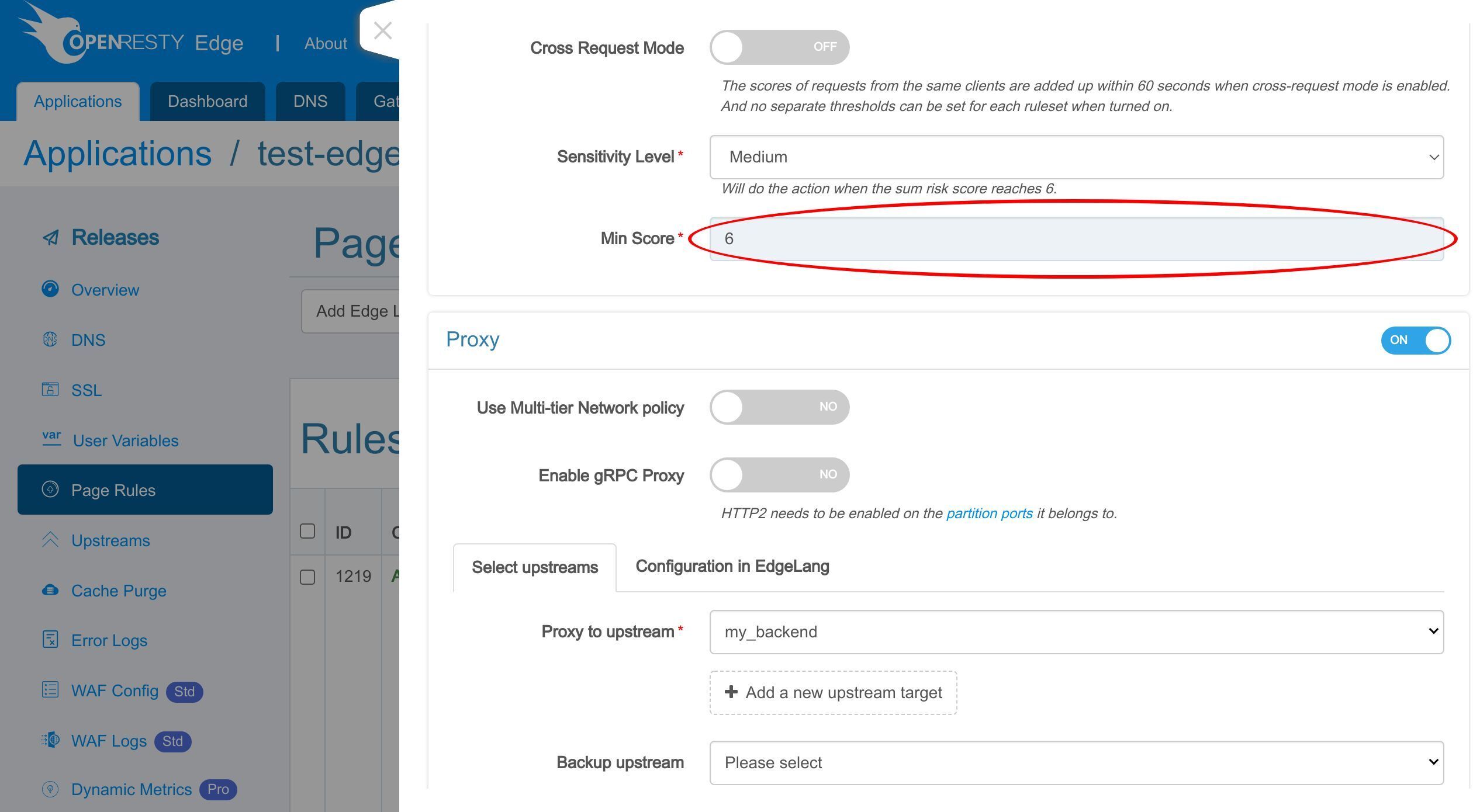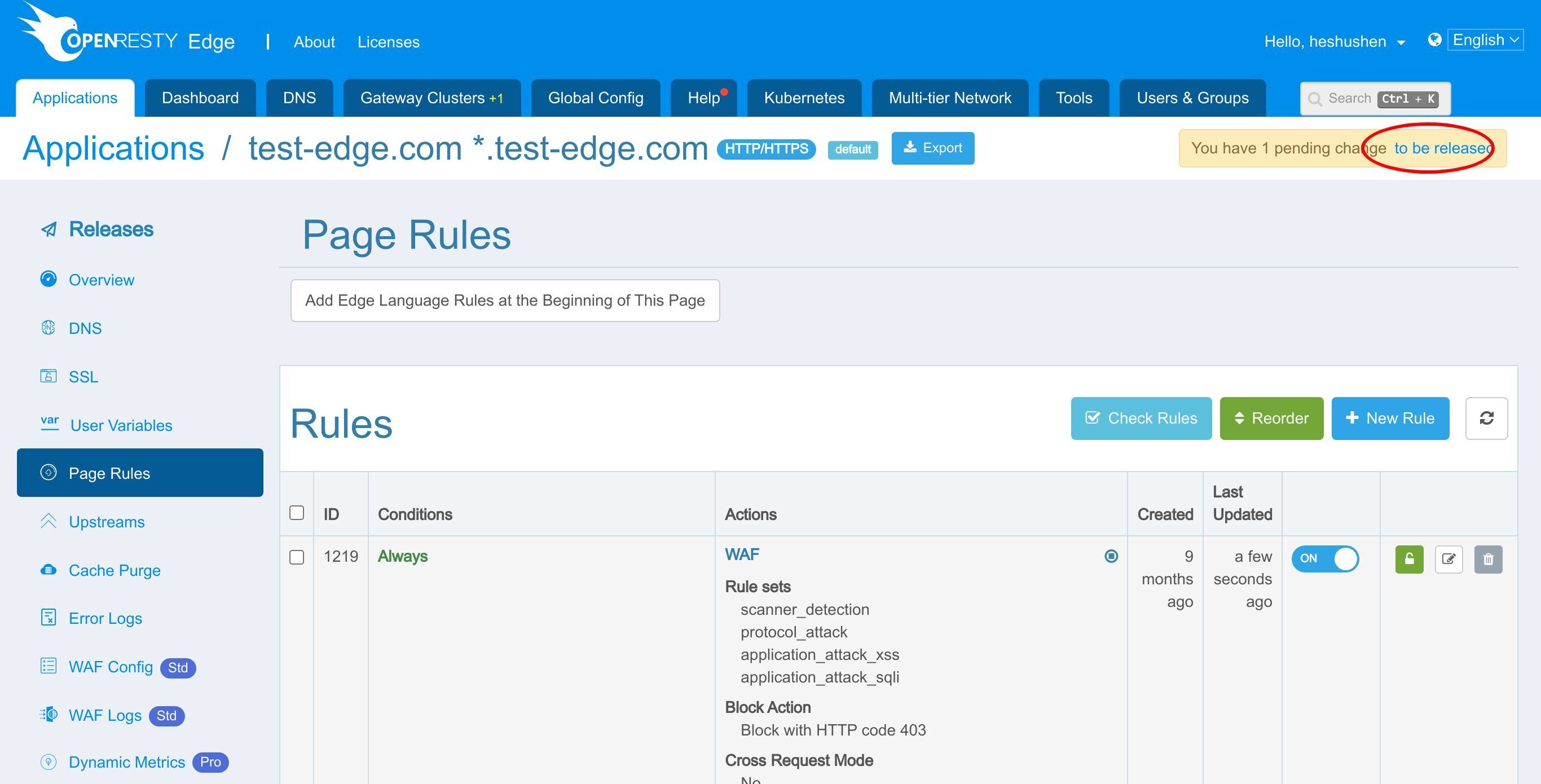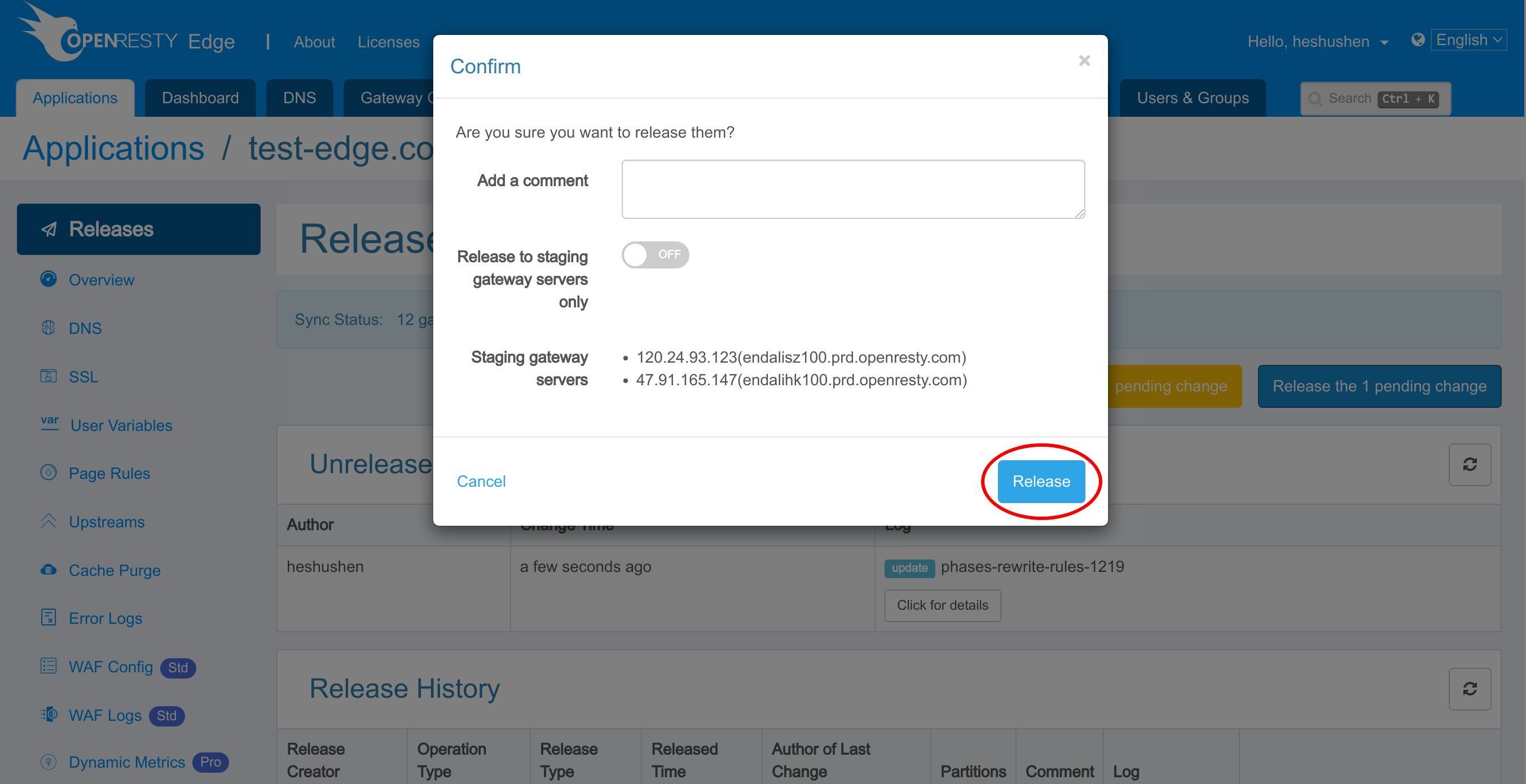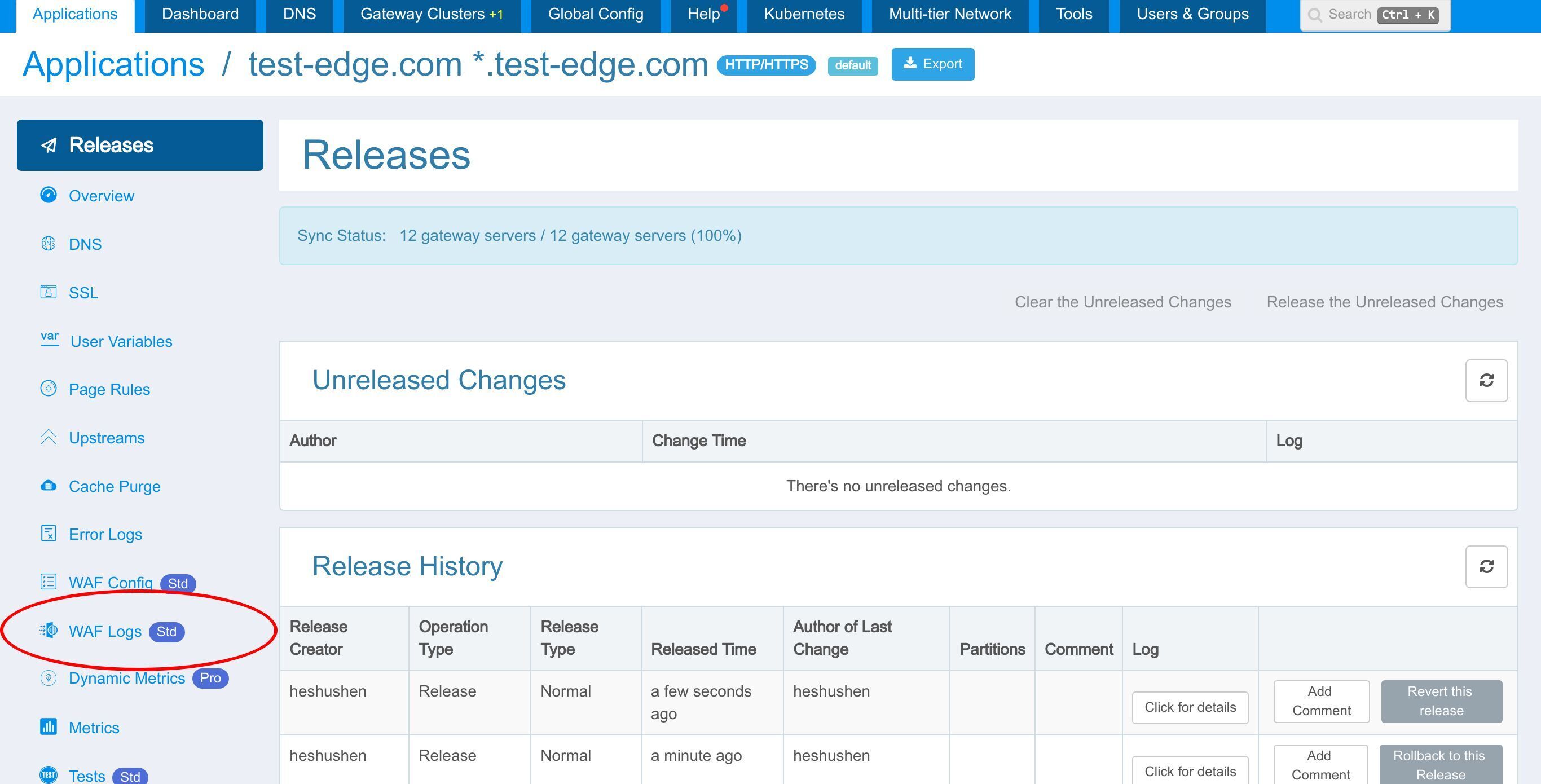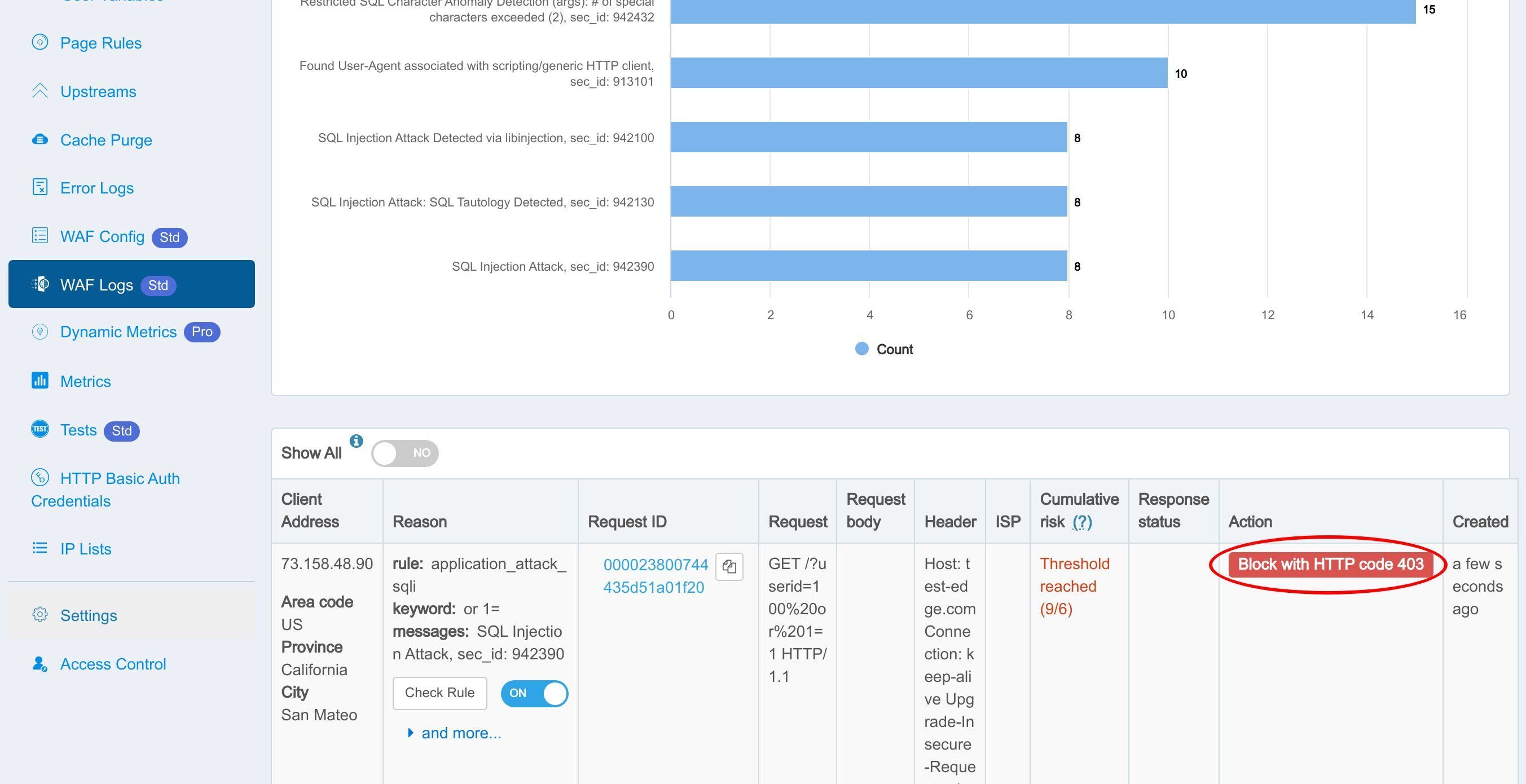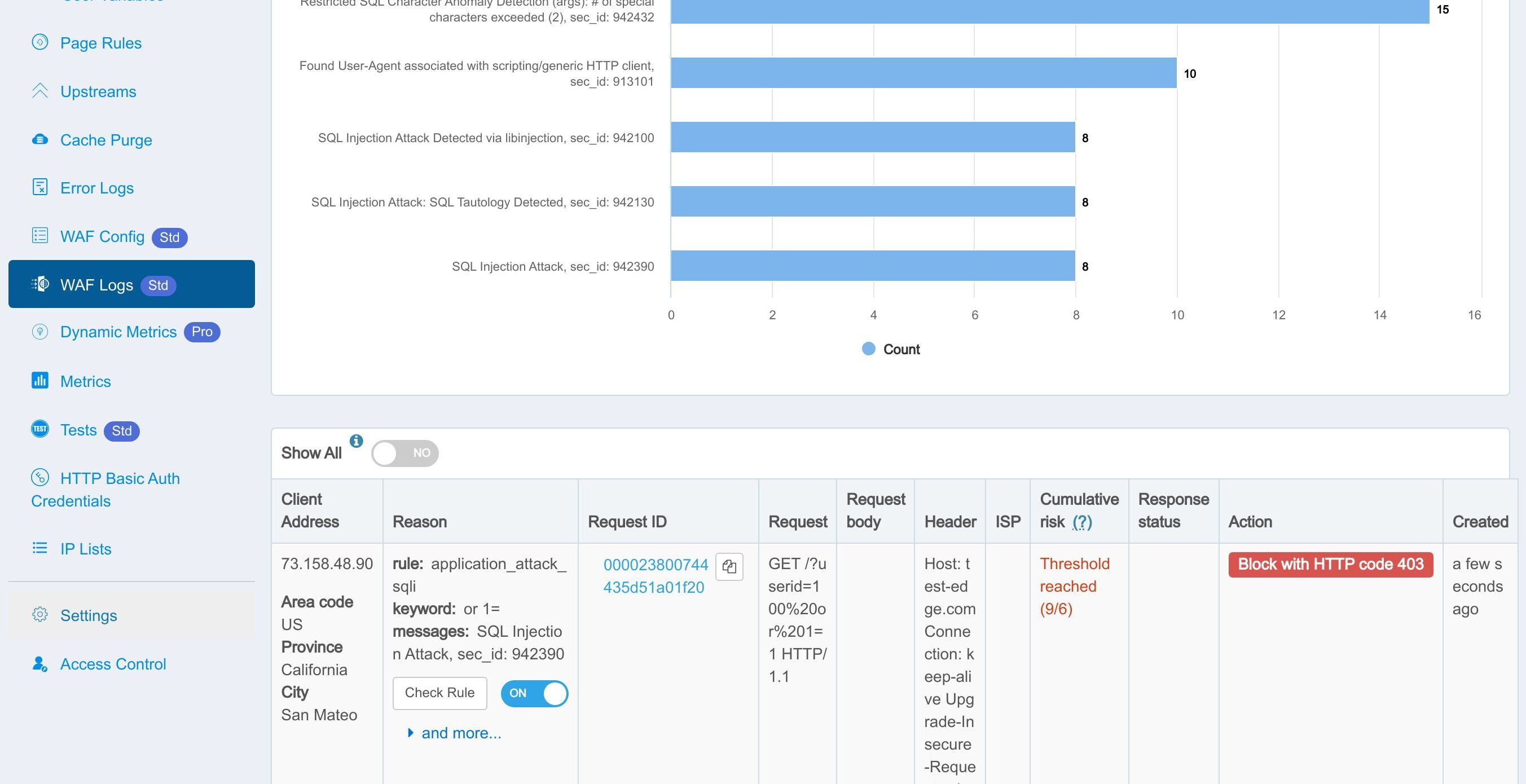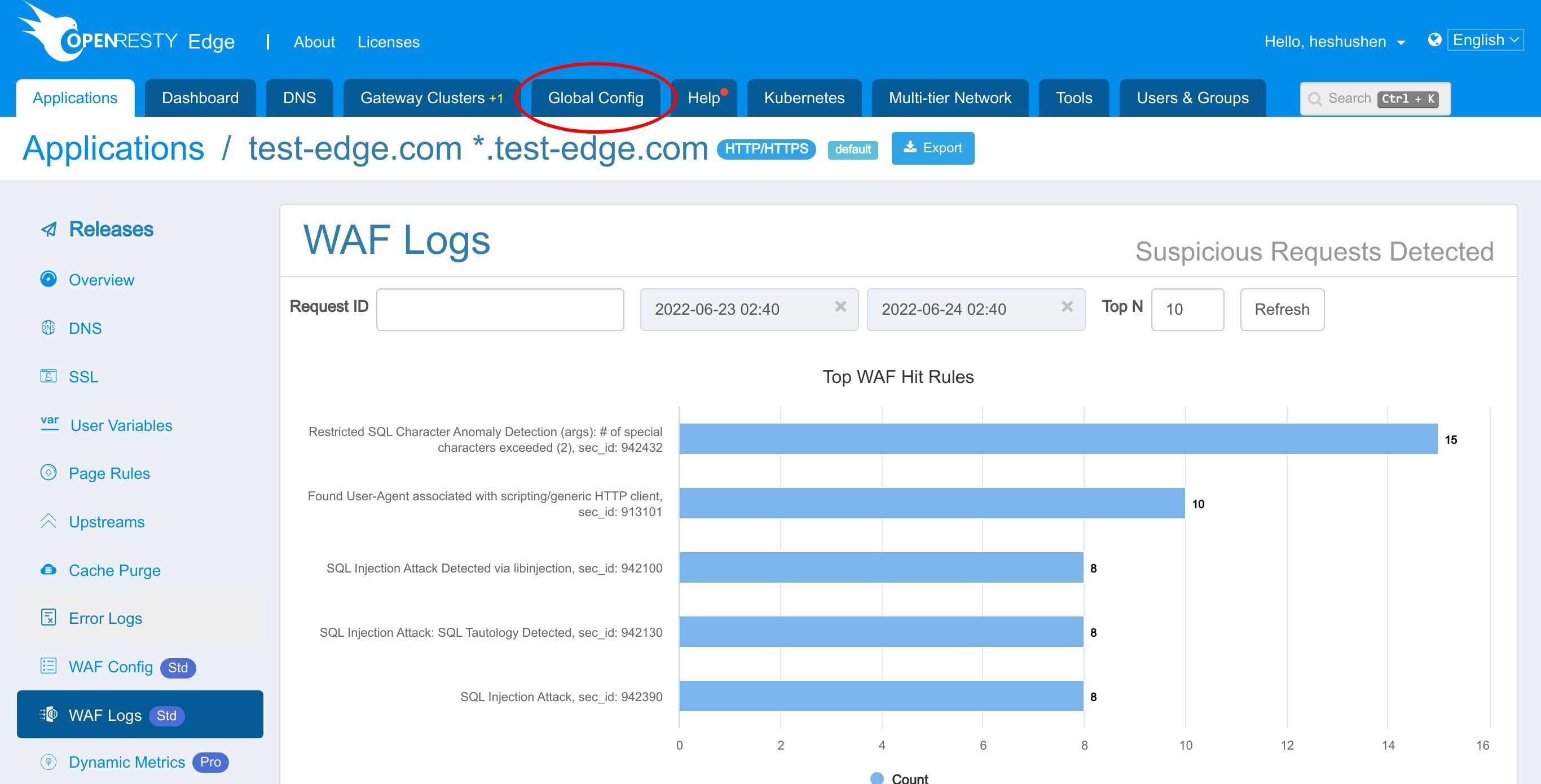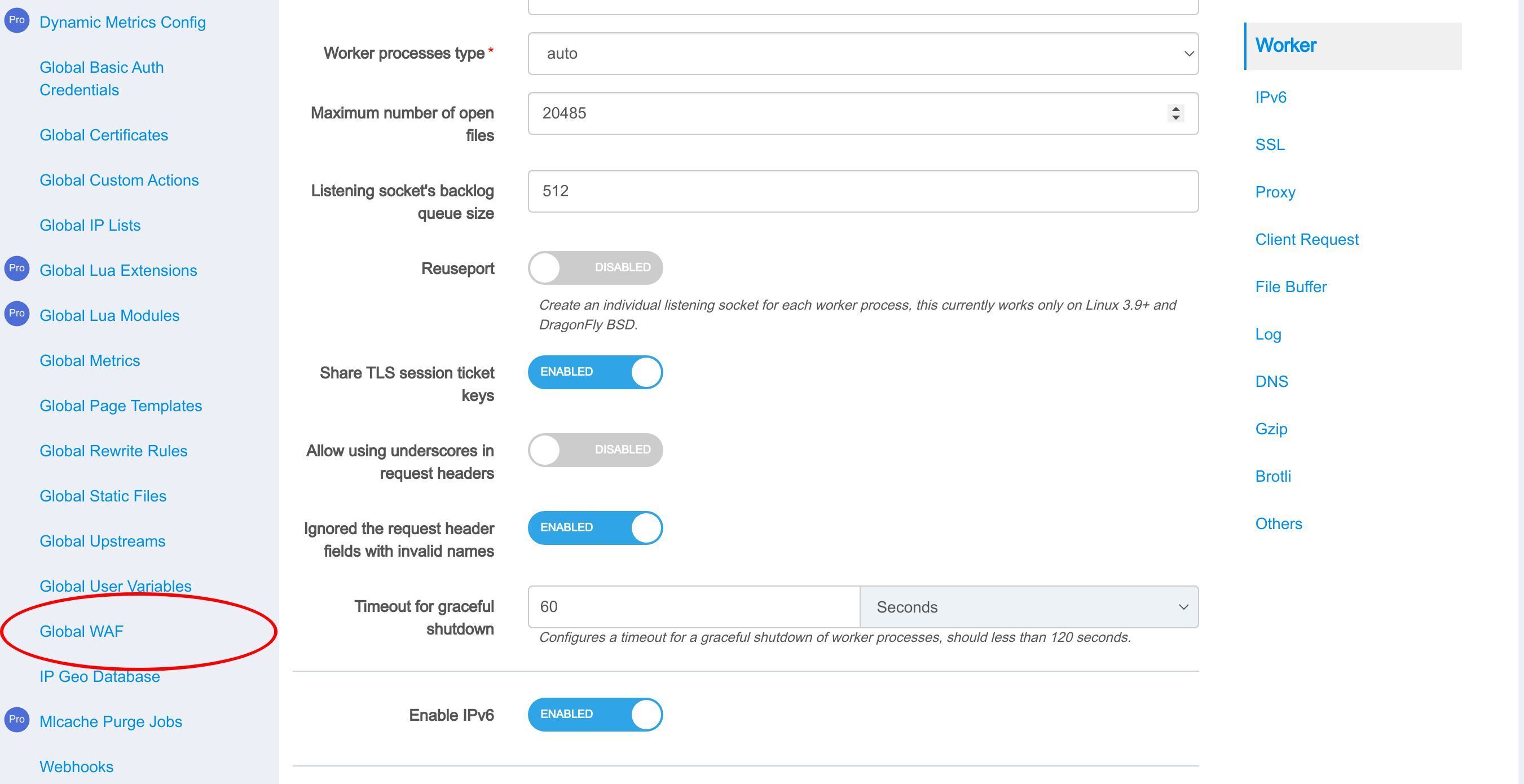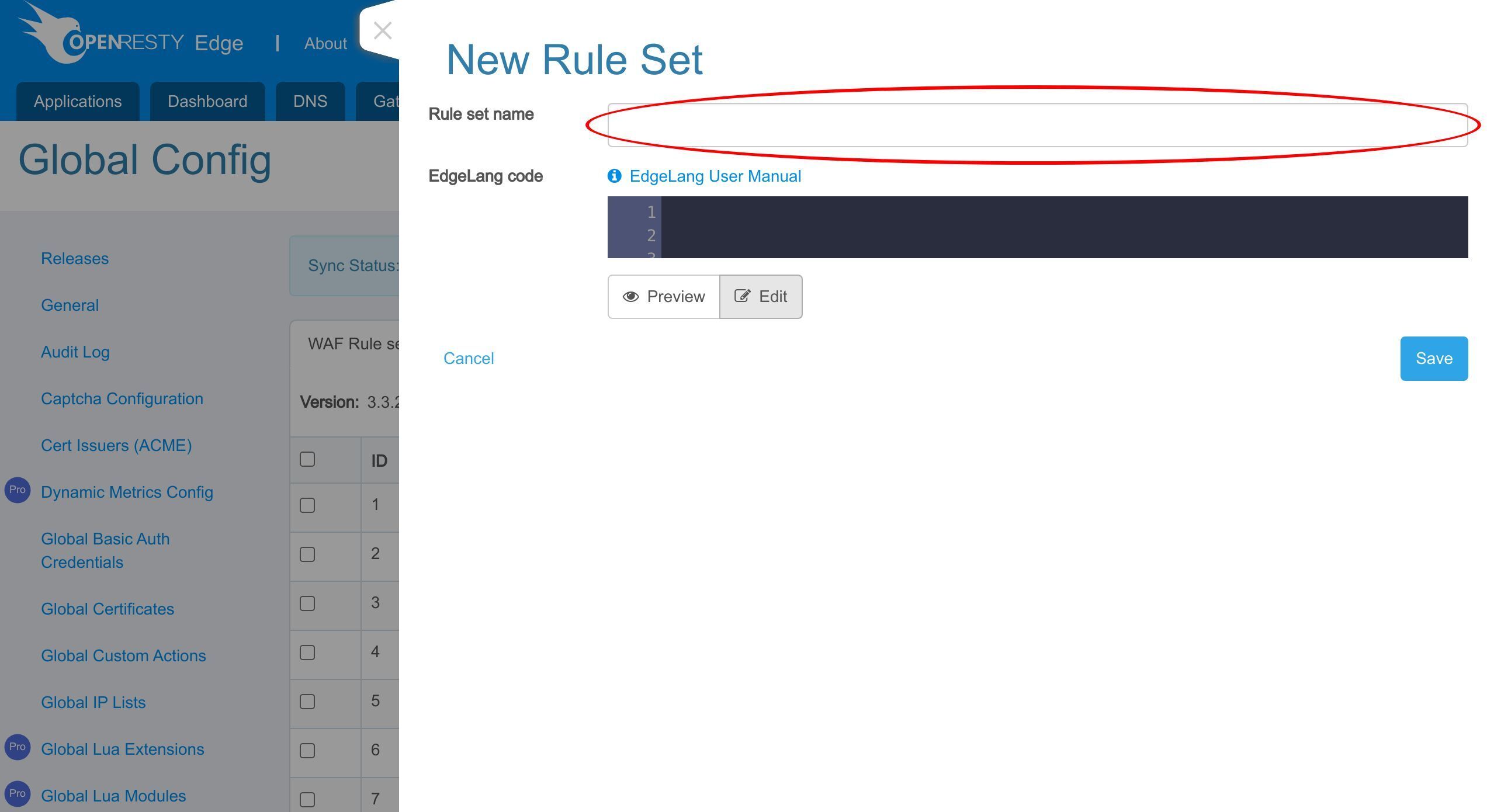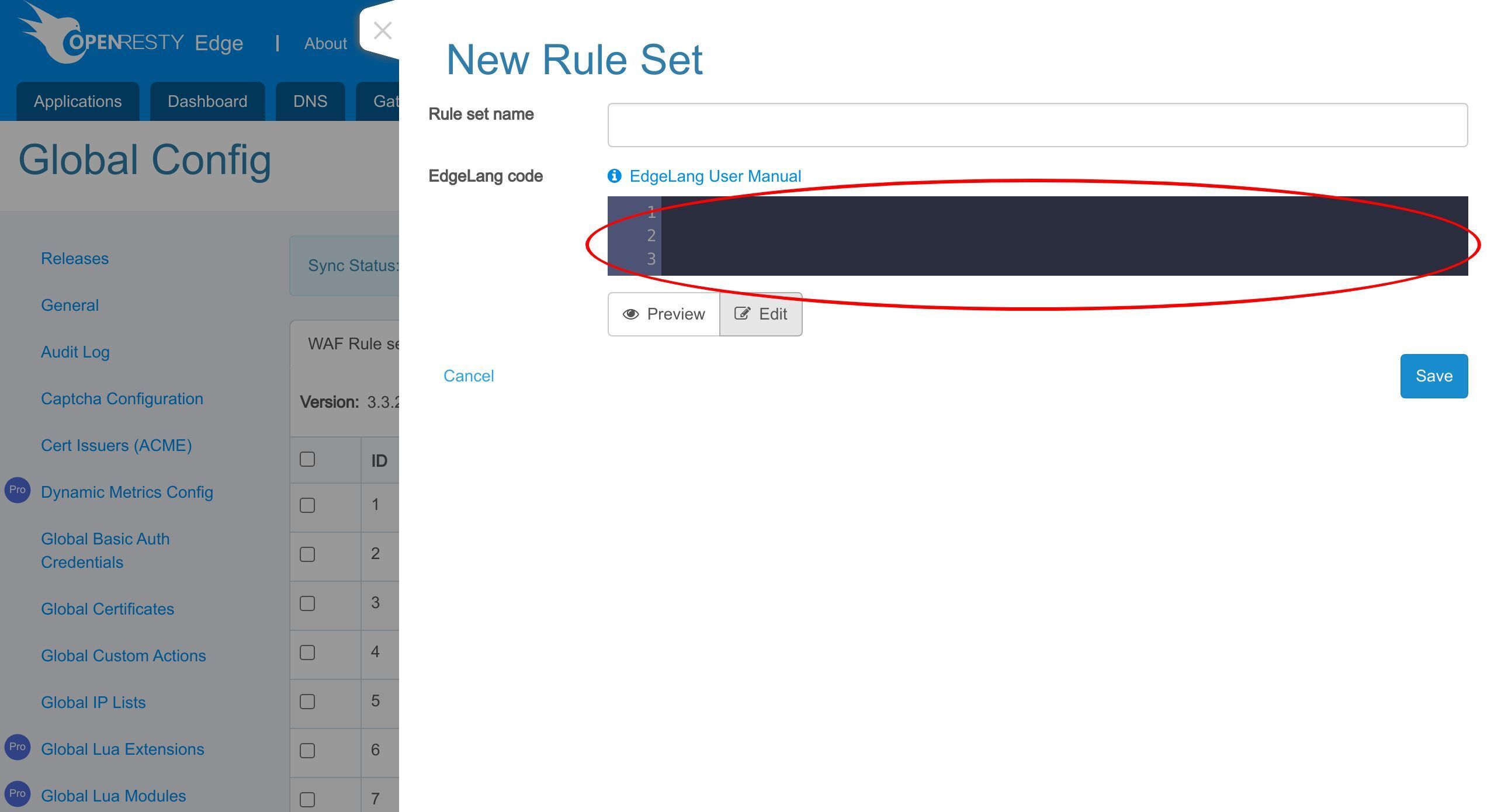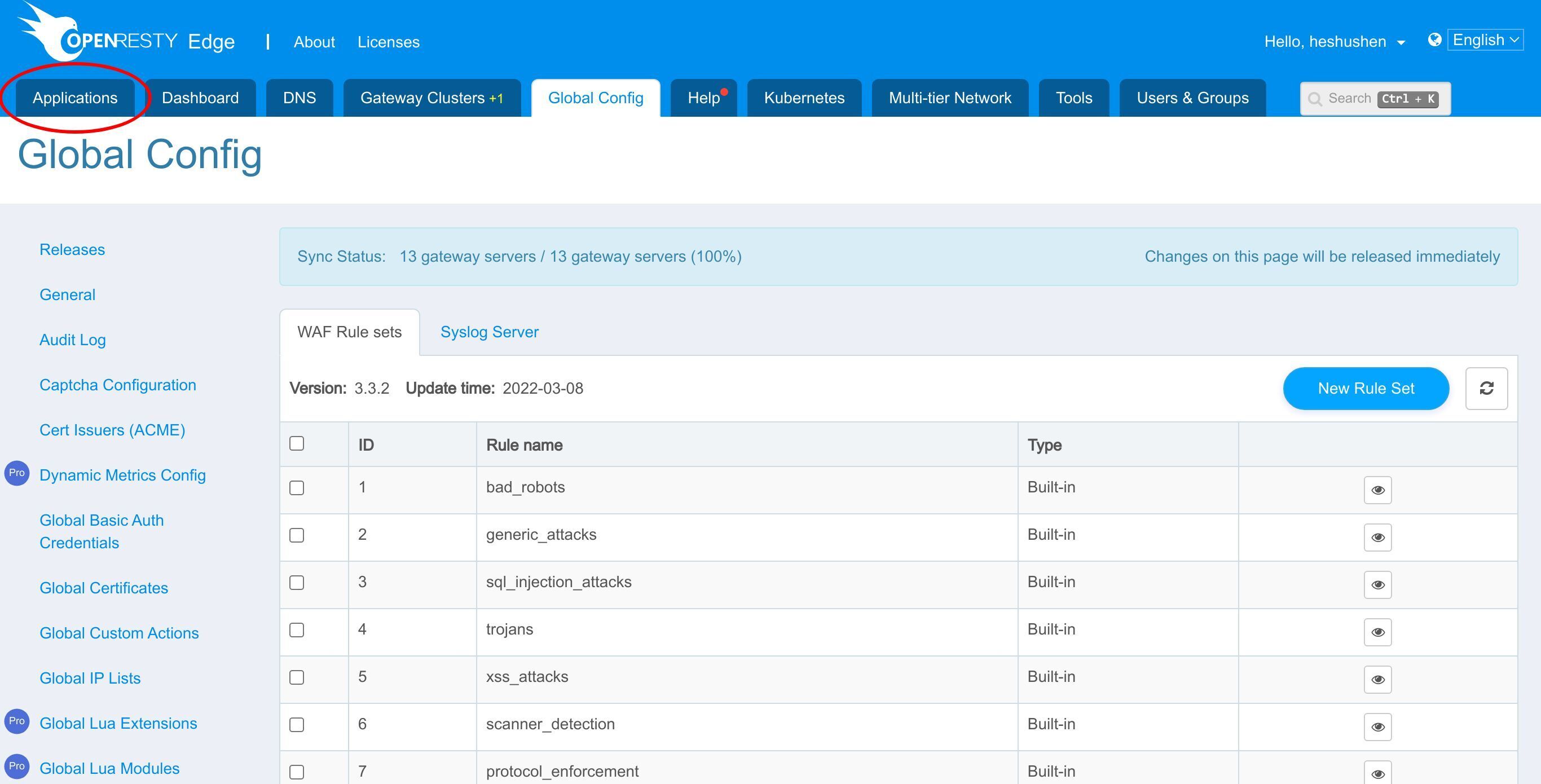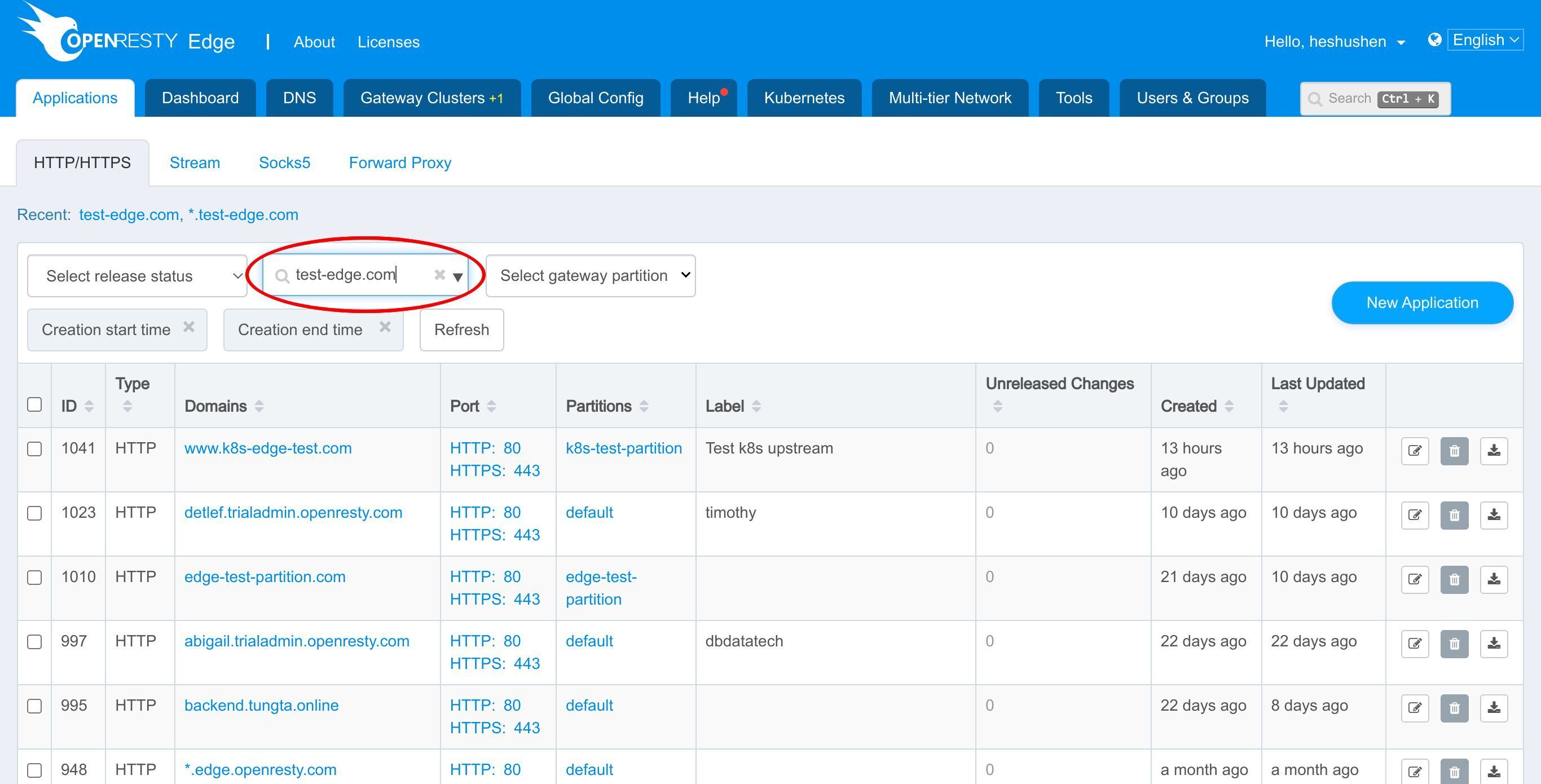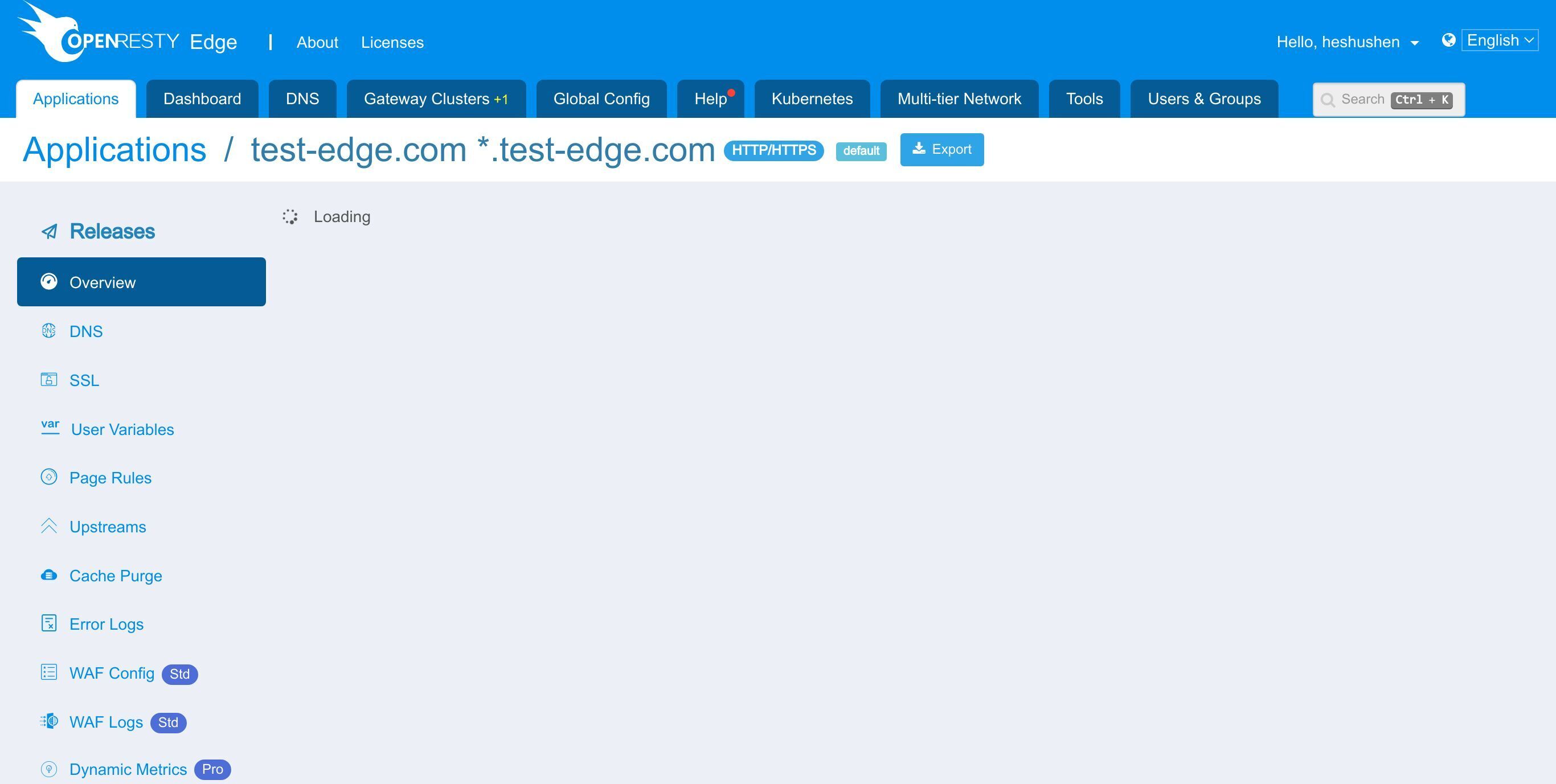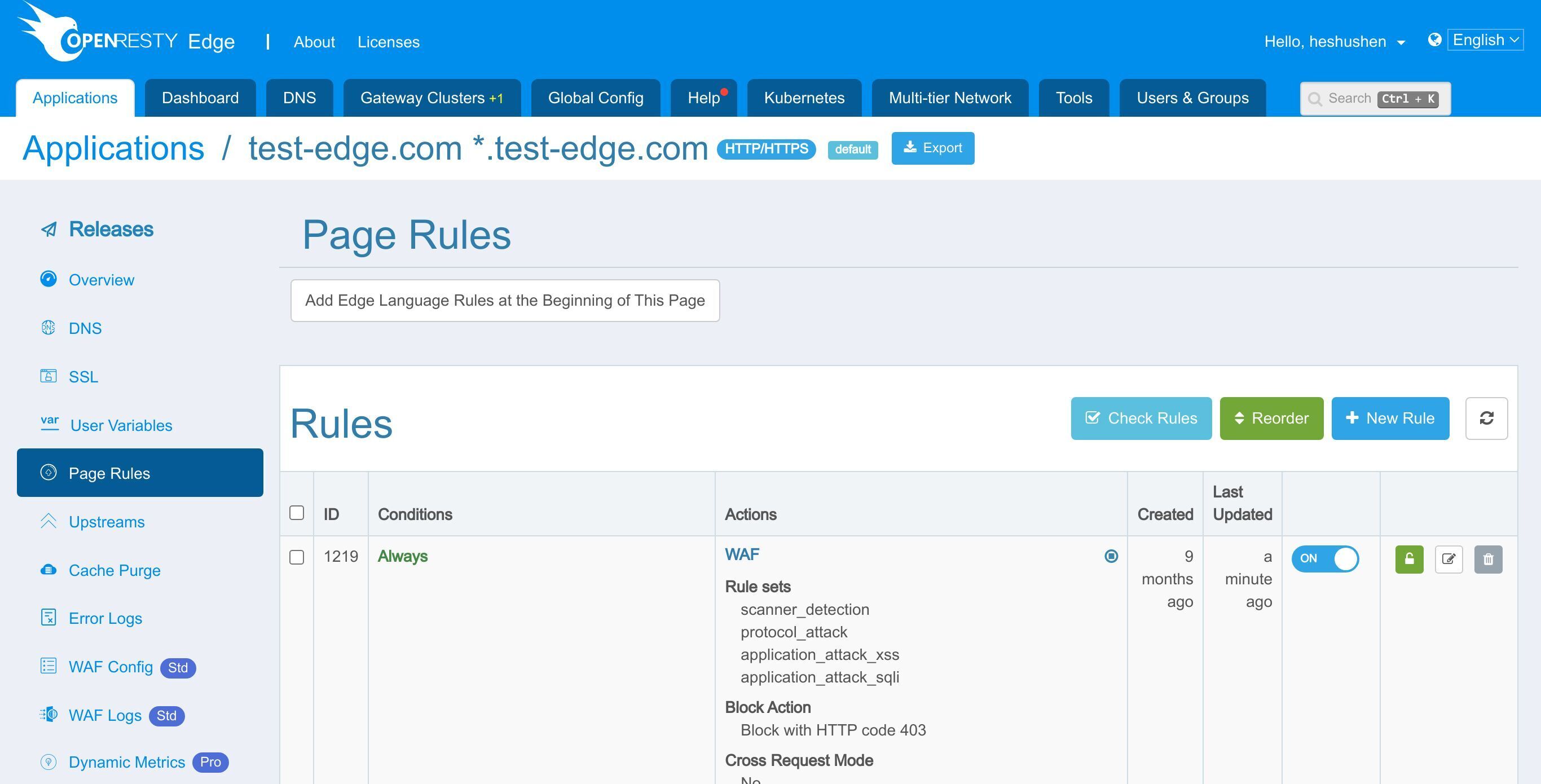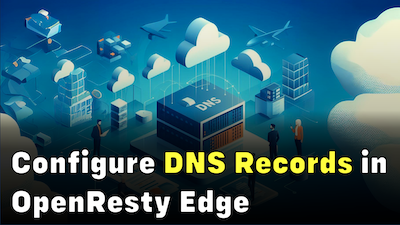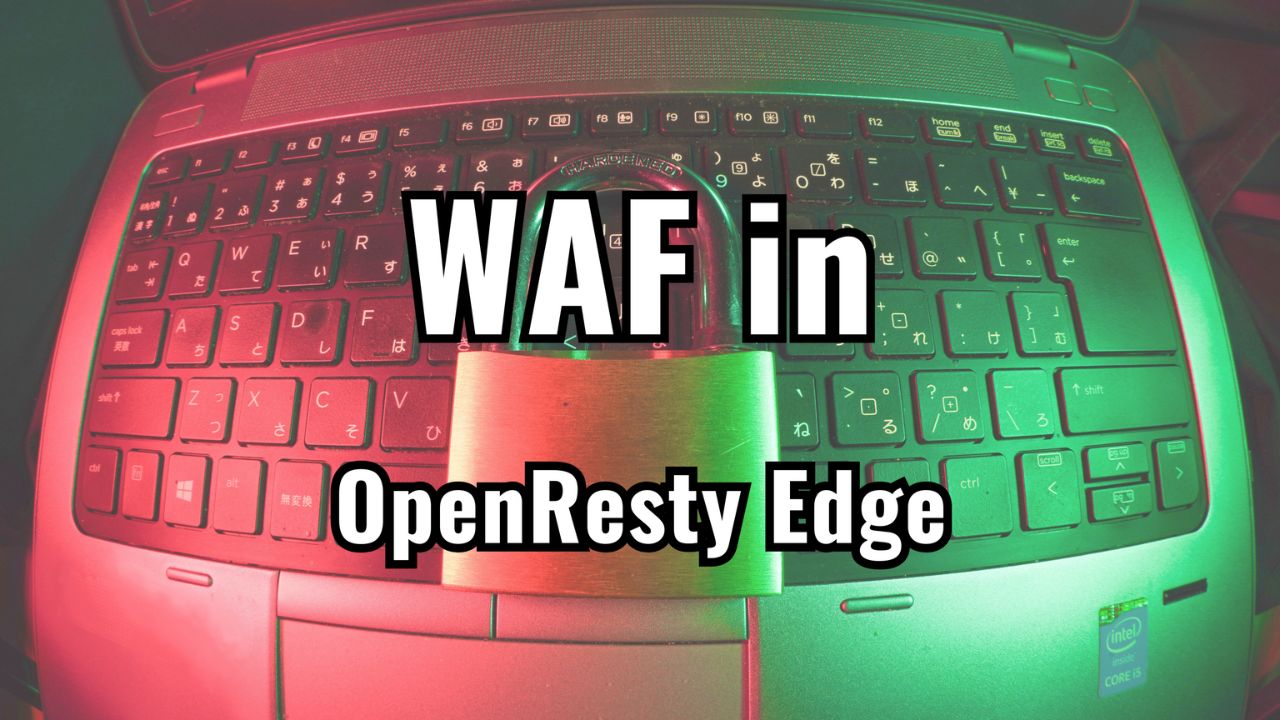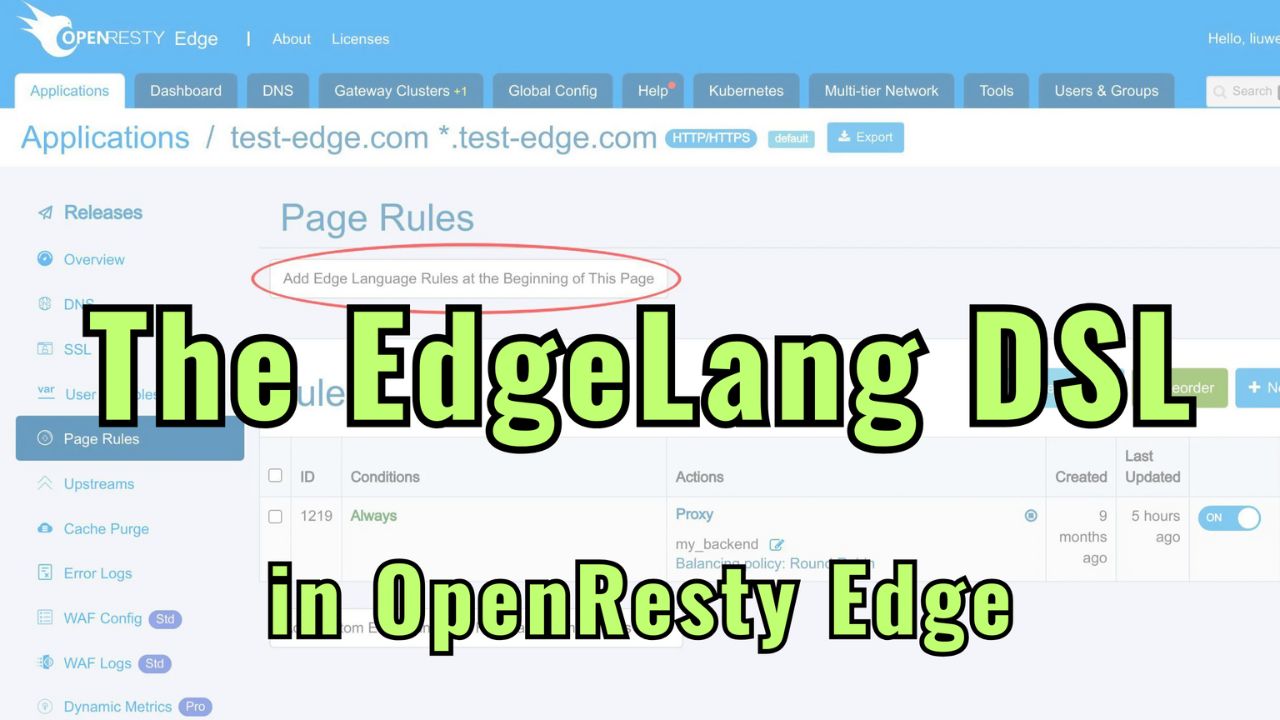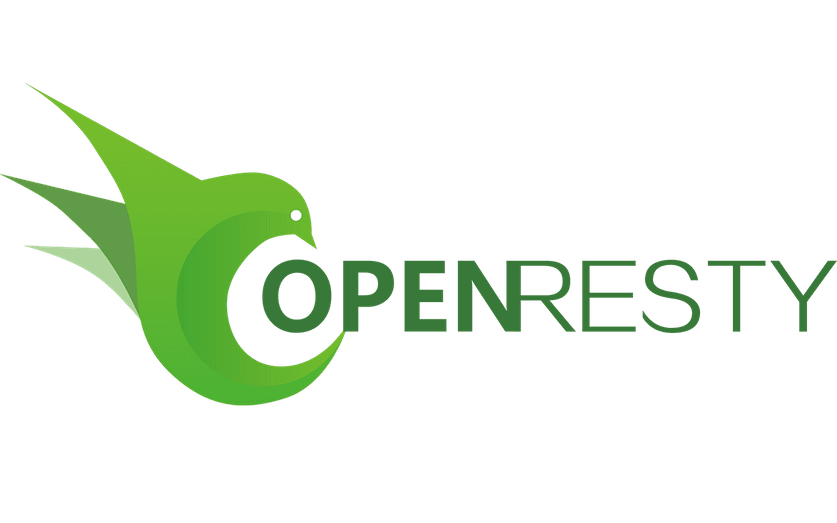High-Performance Web Application Firewall (WAF) in OpenResty Edge
Today I’ll show how to enable the Web Application Firewall, or WAF, in OpenResty Edge.
OpenResty Edge’s WAF platform is many times faster than almost all open-source WAF solutions like ModSecurity and lua-resty-waf.
Enable WAF for applications
Let’s go to the web console of OpenResty Edge. This is our sample deployment of the console. Every user has their own deployment.
We use our continuing sample application for the test-edge.com domain.
Let’s enter this application.
Go to the Page Rules page.
We already have a reverse proxy page rule set up in an earlier tutorial.
Now let’s enable some WAF rulesets.
Edit the page rules.
Click the WAF switch to enable it.
Here we can choose the WAF rulesets to enable.
Here we just keep the default rulesets.
Select the action for the requests hitting the WAF rules.
The Log only action helps test the WAF rule itself without worrying about affecting the requests.
Save the rule.
We need to make a new configuration release to push out our new changes, as always.
Click on this button.
Ship it!
Our new release is now synchronized to all our gateway servers.
Now the change has been pushed to all the gateway clusters and servers.
Our configuration changes do NOT require server reload, restart, or binary upgrade. So it’s very efficient and scalable.
Test the WAF settings of applications
Let’s send a malicious request attempting a SQL injection.
The request returned the default index page of the origin site. It was to be expected since we chose to log hits only.
Let’s check the WAF hit Logs in the web console.
We can see that the rule was indeed hit and logged.
This part shows the details of the individual requests caught by the WAF.
Click the Check Rule button to see the details of the WAF rule matched.
Show the rule definition in the Edge language.
Disable and re-enable WAF
If you find any false positives, you can toggle this switch to disable the corresponding WAF rule individually.
Disabled rules will be displayed on the WAF Config page.
Here is the list of disabled WAF rules.
And this is the WAF rule we just disabled.
Click the Delete button to re-enable the rule.
WAF whitelist
Furthermore, you can add a WAF white-list to skip requests which should bypass the WAF to save CPU cycles.
For example, static assets generally don’t need WAF filtering. Skipping those resources can reduce the overhead on your servers.
Change the block action after a WAF hit
This time, let’s change the “Log only” action to something else. Like returning a 403 error response.
Go to the Page Rules page.
Edit the page rule again.
Change the action.
We’ll block malicious requests this time.
Here we can set the sensitivity level.
Alternatively, we can also set a score number directly.
It is the sum of the risk scores of all the matched WAF rules. The action will not run until the total score threshold is reached.
Save the rule.
Release the configuration changes again.
Test the new block action
Send the malicious request again.
The server returned a “403 Forbidden” response this time.
Check out the WAF Logs page again.
The action logged is indeed “Block with HTTP code 403” here.
Create WAF rule set
The WAF platform is very flexible and extensible. You can also create your own WAF rulesets.
Go to the Global Config page.
Click the “Global WAF” menu item.
Click the New Rule Set button.
Enter the ruleset name here, and definition here.
And also custom WAF rules in our Edge language, or Edgelang for short.
And then we can save it.
Quit this page.
The implementation of WAF in OpenResty Edge
OpenResty Edge’s WAF is extremely efficient because it implements many advanced optimization techniques.
It supports combining regular expressions referenced by all the WAF rules into a single state machine. This way, it can immediately know which rules and which parts of those rules are matched by scanning the request data only once.
It also supports combining constant string prefix and suffix patterns into single Trie tree data structures across all the WAF rules.
These optimizations are not just specific to the WAF platform.
All the page rules and Edge language rules enjoy exactly the same optimizations as well.
This is what I’d like to cover today.
What is OpenResty Edge
OpenResty Edge is our all-in-one gateway software for microservices and distributed traffic architectures. It combines traffic management, private CDN construction, API gateway, security, and more to help you easily build, manage, and protect modern applications. OpenResty Edge delivers industry-leading performance and scalability to meet the demanding needs of high concurrency, high load scenarios. It supports scheduling containerized application traffic such as K8s and manages massive domains, making it easy to meet the needs of large websites and complex applications.
If you like this tutorial, please subscribe to this blog site and/or our YouTube channel. Thank you!
About The Author
Yichun Zhang (Github handle: agentzh), is the original creator of the OpenResty® open-source project and the CEO of OpenResty Inc..
Yichun is one of the earliest advocates and leaders of “open-source technology”. He worked at many internationally renowned tech companies, such as Cloudflare, Yahoo!. He is a pioneer of “edge computing”, “dynamic tracing” and “machine coding”, with over 22 years of programming and 16 years of open source experience. Yichun is well-known in the open-source space as the project leader of OpenResty®, adopted by more than 40 million global website domains.
OpenResty Inc., the enterprise software start-up founded by Yichun in 2017, has customers from some of the biggest companies in the world. Its flagship product, OpenResty XRay, is a non-invasive profiling and troubleshooting tool that significantly enhances and utilizes dynamic tracing technology. And its OpenResty Edge product is a powerful distributed traffic management and private CDN software product.
As an avid open-source contributor, Yichun has contributed more than a million lines of code to numerous open-source projects, including Linux kernel, Nginx, LuaJIT, GDB, SystemTap, LLVM, Perl, etc. He has also authored more than 60 open-source software libraries.

